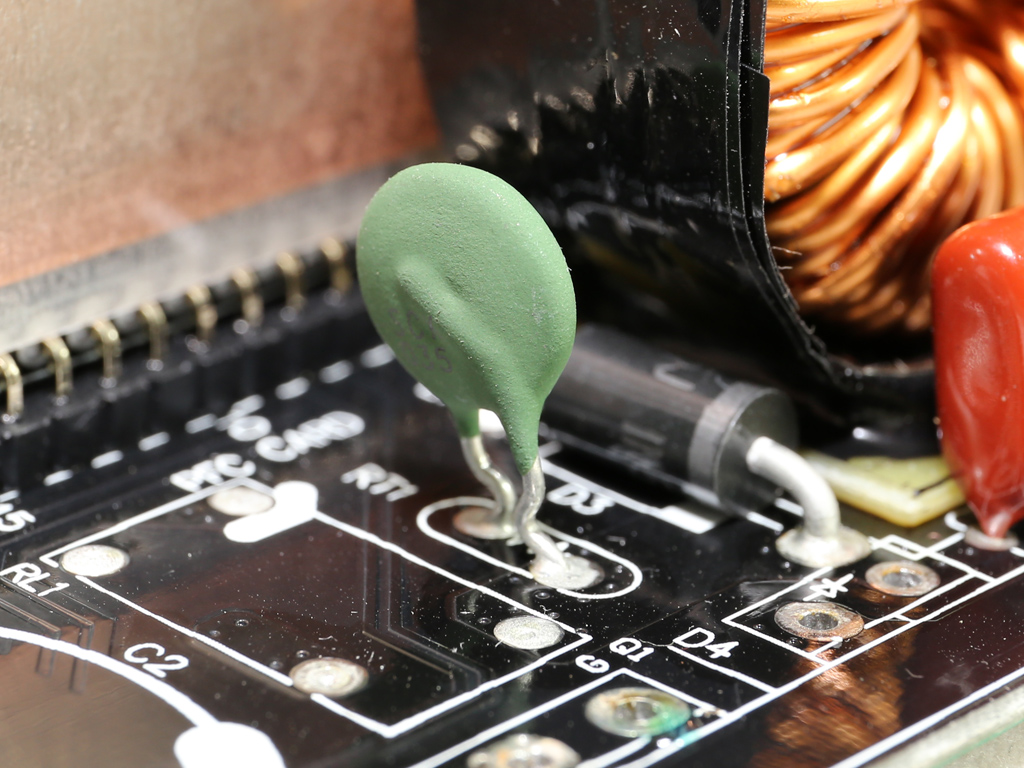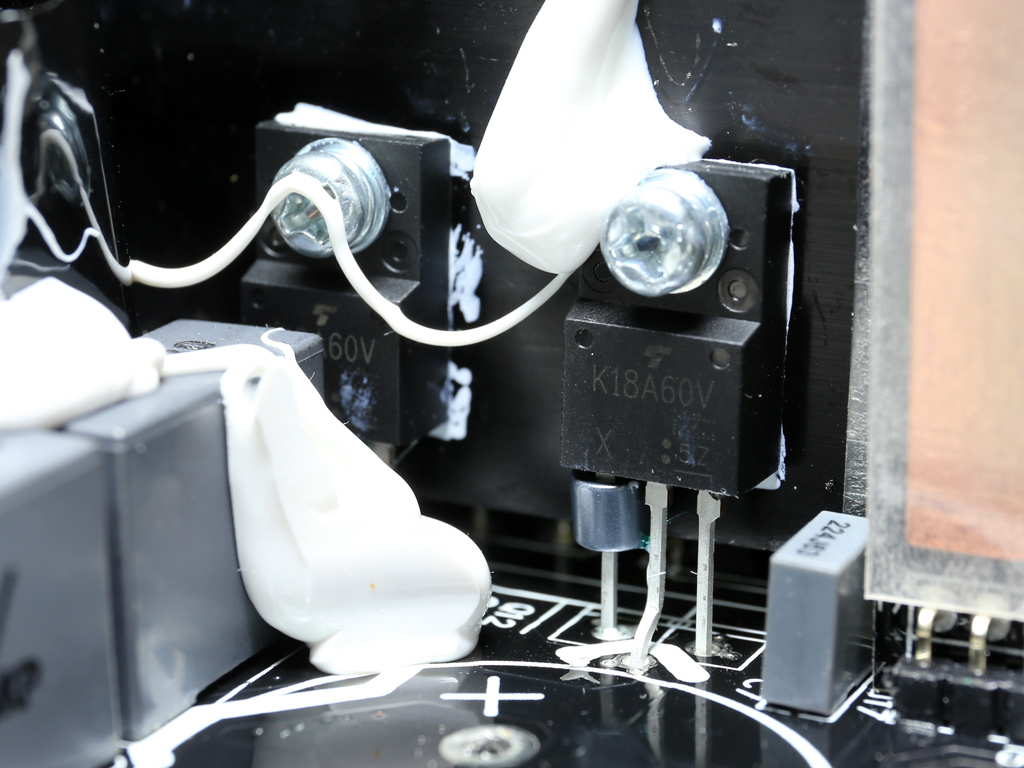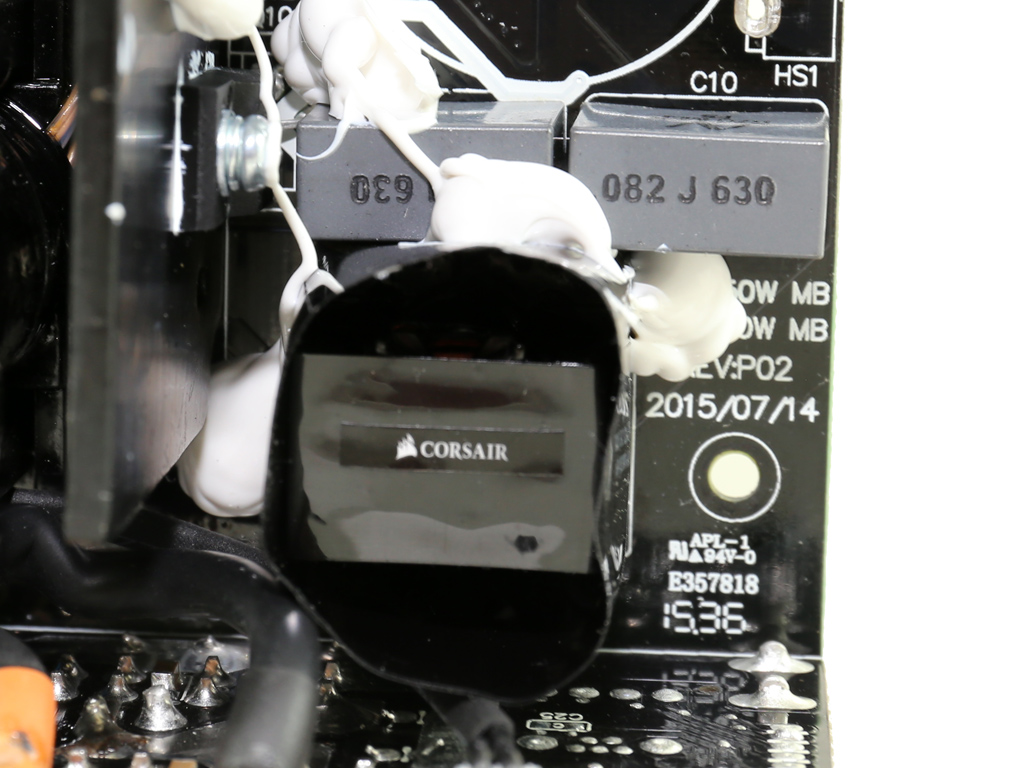Corsair RM650x PSU Review
Another Corsair PSU is in the lab, commanding our attention. We already reviewed the RM750x and RM550x, so we couldn't leave out the RM650x. It promises the same high performance as its siblings, along with super quiet operation.
Why you can trust Tom's Hardware
A Look Inside And Component Analysis
Parts Description
Before proceeding with this page, we strongly encourage you to a look at our PSUs 101 article, which provides valuable information about PSUs and their operation, allowing you to better understand the components we're about to discuss. Our main tools for disassembling PSUs are a Thermaltronics soldering and rework station, and a Hakko FR-300 desoldering gun.
| Primary Side | |
|---|---|
| Transient Filter | 4x Y caps, 2x X caps, 2x CM chokes, 1x MOV |
| Inrush Protection | NTC Thermistor |
| Bridge Rectifier(s) | 1x GBU1506 (600V, 15A @ 100 °C) |
| APFC MOSFETs | 1x Infineon IPW60R125P6 (650V, 19A @ 100 °C, 0.125Ω) |
| APFC Boost Diode | 1x Vishay 8S2TH061 (600V, 8A @ 120 °C) |
| Hold-up Cap(s) | 1x Nippon Chemi-Con (400V, 680uF, 2000h @ 105 °C, KMR) |
| Main Switchers | 2x Toshiba TK18A60V (600V, 18A, 0.19Ω) |
| APFC Controller | Infineon ICE3PCS01G - CM03X |
| Switching Controller | Infineon ICE2HS01G |
| Topology | Primary side: Half-Bridge & LLC Resonant Converter Secondary side: Synchronous Rectification & DC-DC converters |
| Secondary Side | |
| +12V MOSFETs | 4x Sinopower SM4021NAKP (40V, 100A @ 100 °C, 2.7 mΩ @ VGS=6V) |
| 5V & 3.3V | DC-DC Converters: 2x QM3006D & 4x QM3004D FETs PWM Controller: APW7159 |
| Filtering Capacitors | Electrolytics: Chemi-Con (105 °C, KZE & KZH series) Polymers: Nippon Chemi-Con |
| Supervisor IC | Weltrend WT7502 |
| Fan Model | NR135L (12V, 0.22A, Rifle Bearing) |
| 5VSB Circuit | |
| Rectifier | PFR20V45CT (45V, 20A, VF: 0.42V max @ 125 °C) |
| Standby PWM Controller | On-Bright OB5269 |
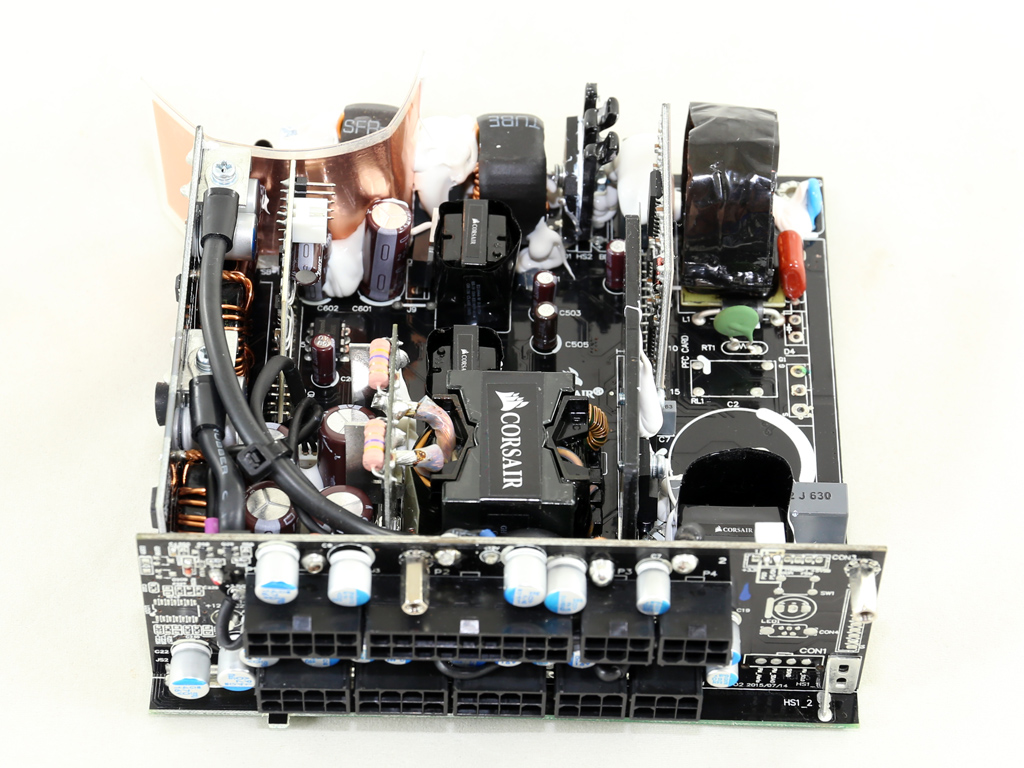
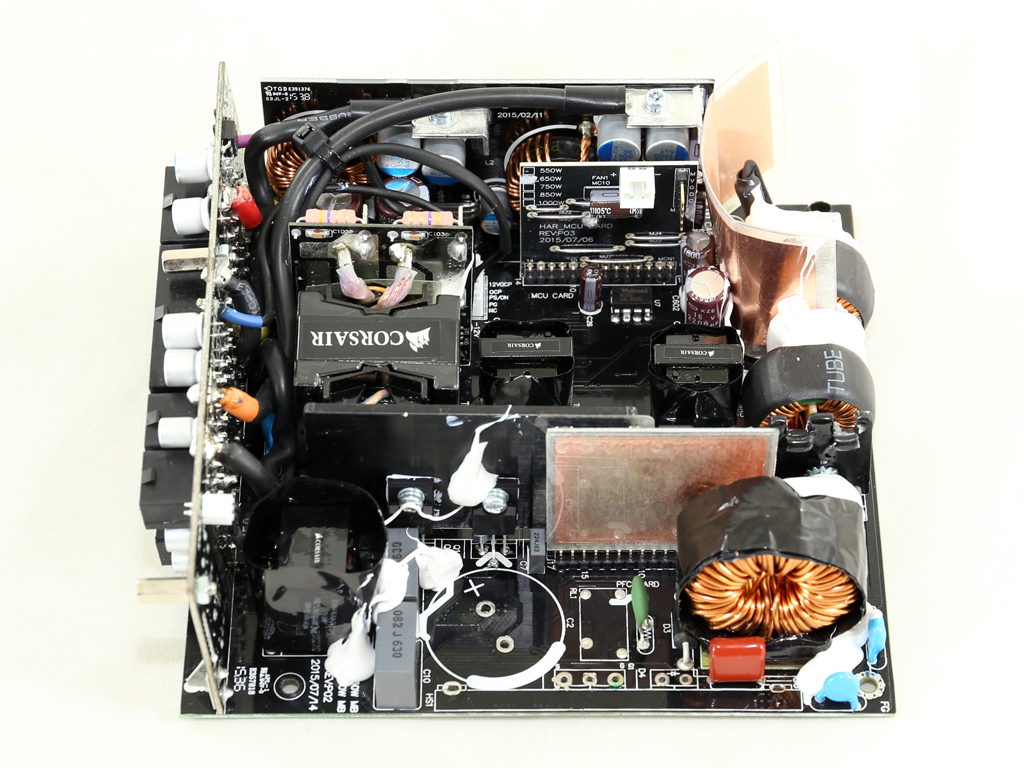
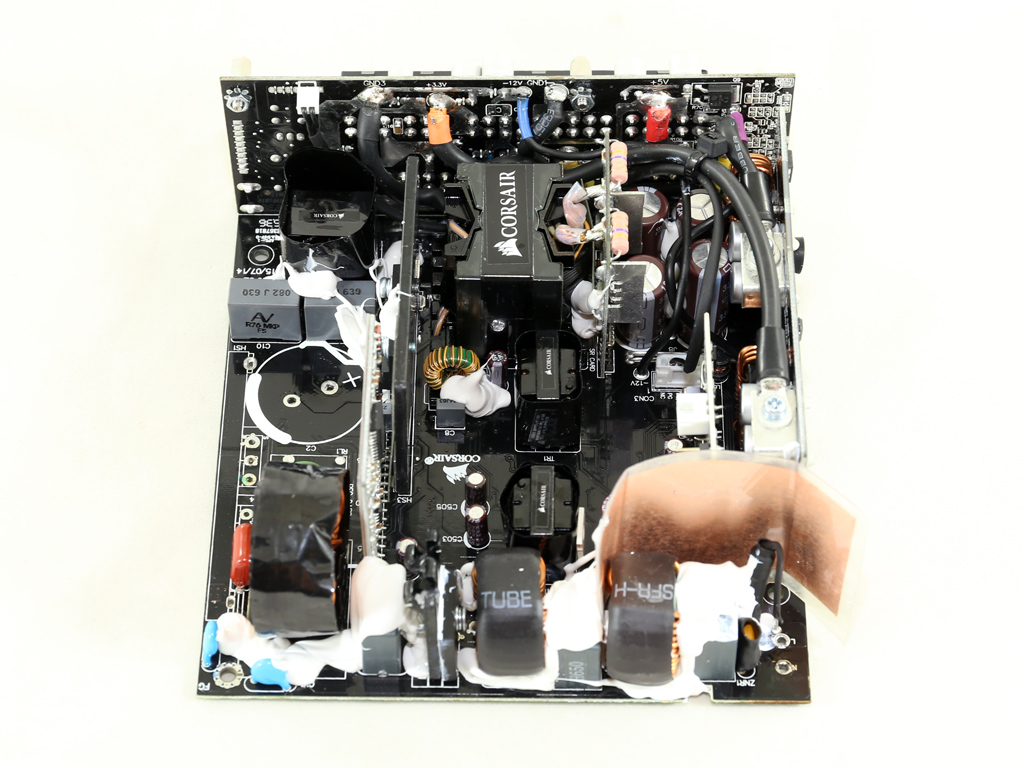
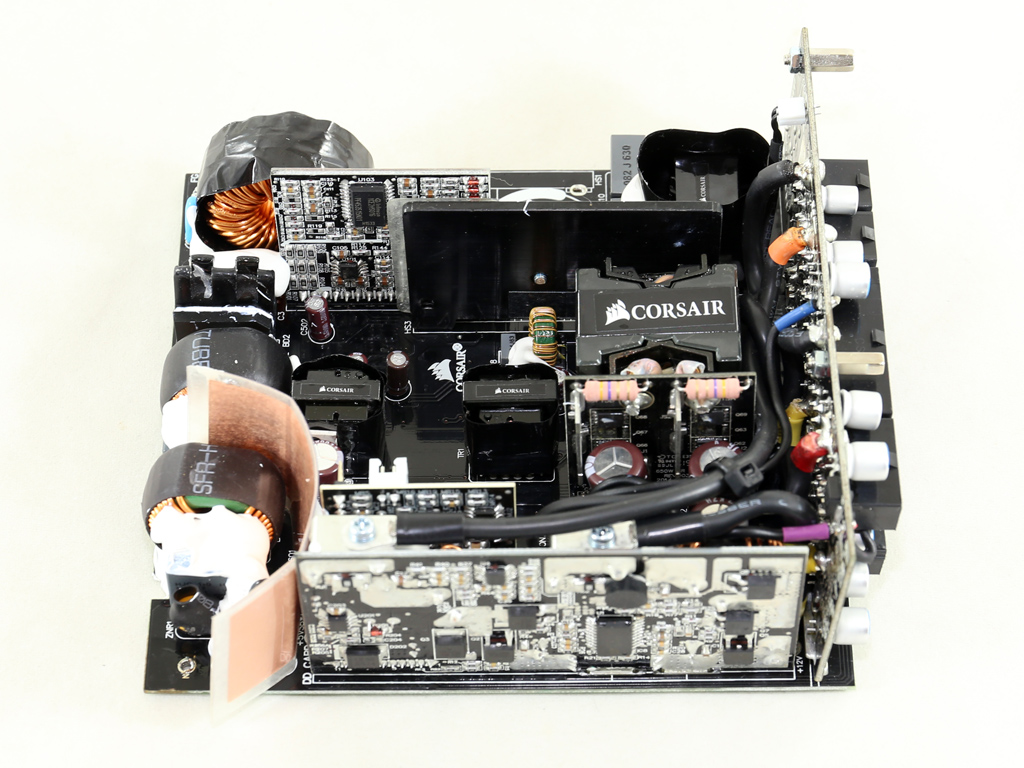
The heat sinks are really small. In fact, there aren't any at all on the secondary side since the +12V FETs are cooled by a couple of metallic bars. As you know (since we already mentioned it a couple of times), Channel Well Technology builds the RMx PSUs, which are based on a special design developed with the help of Corsair's engineers. You'll find the same platform at the heart of the RMi line-up; Corsair simply leaves its digital interface off of this version. In addition, the RMi series includes fluid dynamic bearing fans, while the RMx employs a rifle bearing fan. The aggressive semi-passive mode cannot be deactivated. That's alright, though. In addition to keeping noise down, it helps minimize wear on the fan.
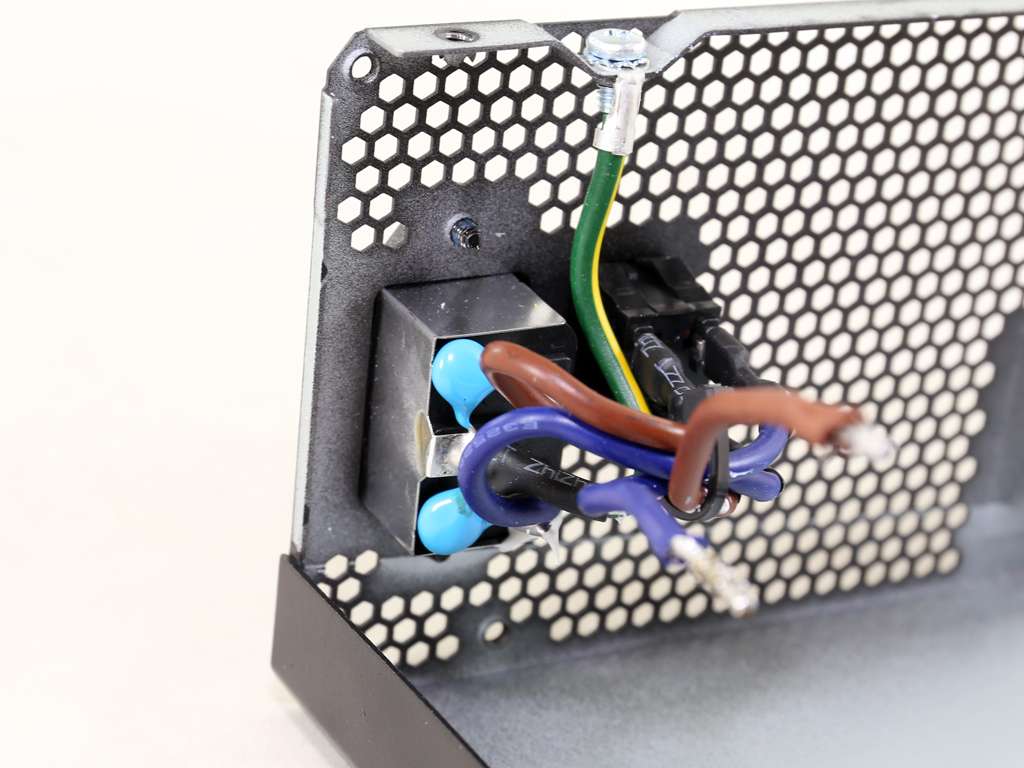
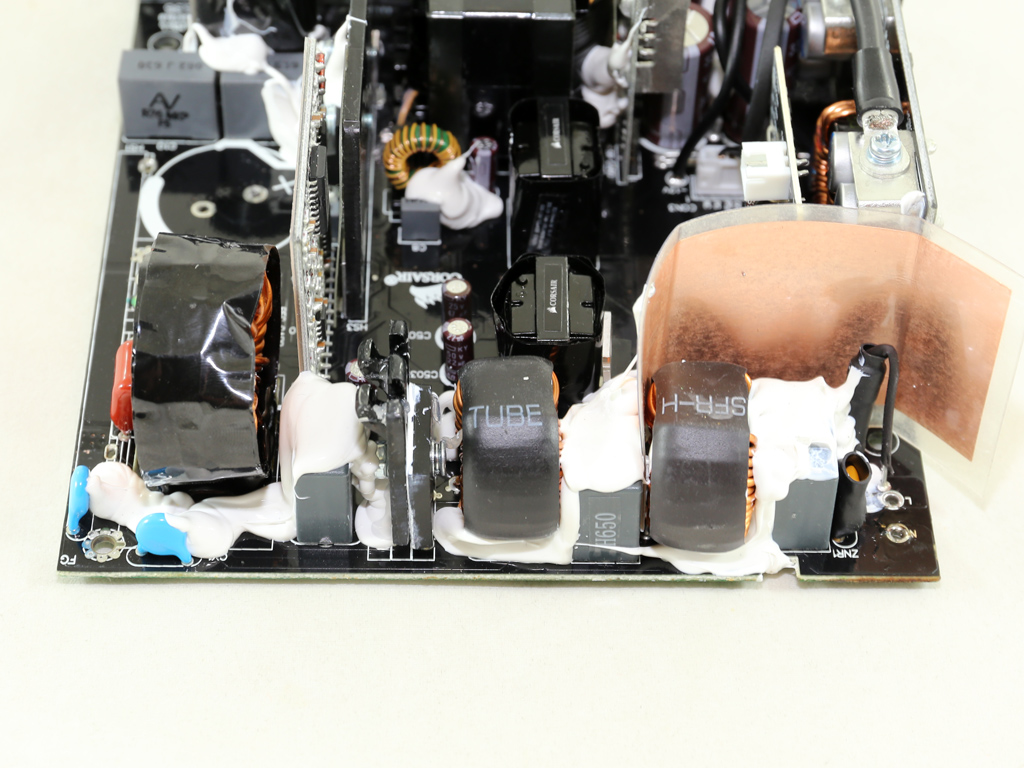
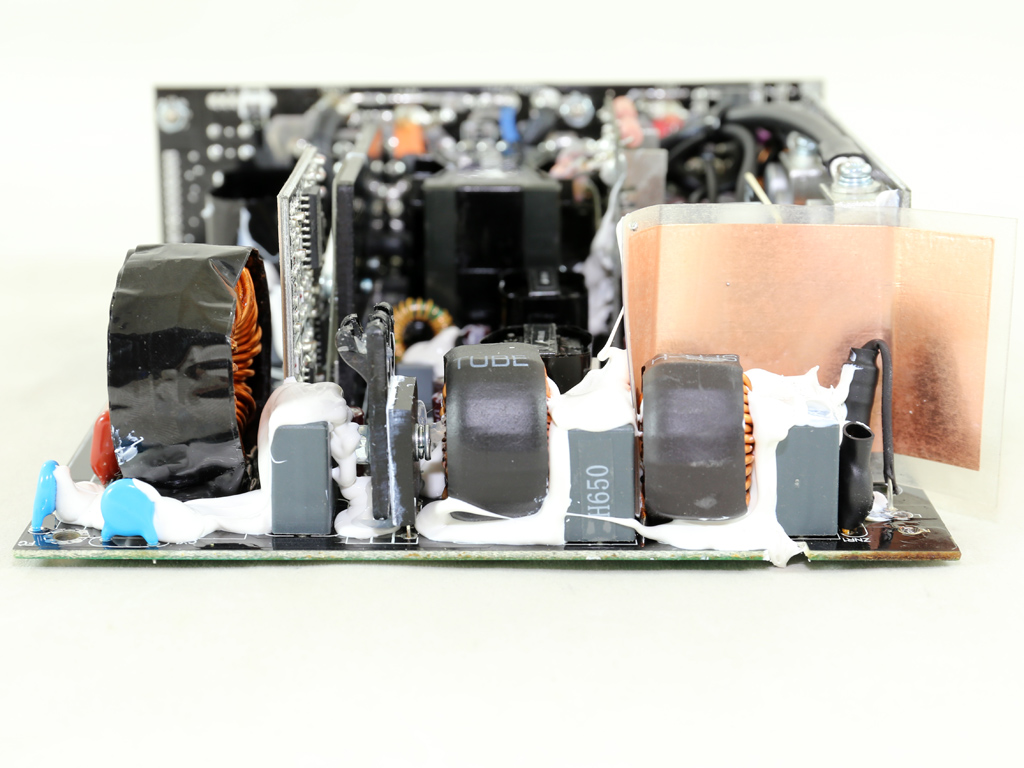
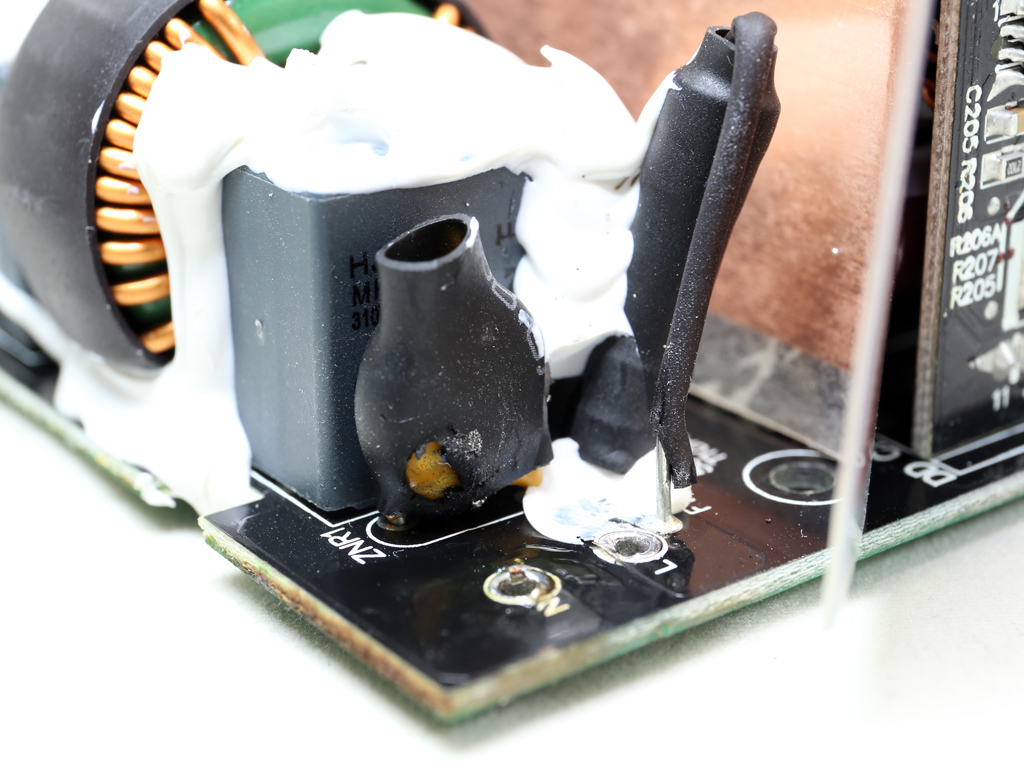
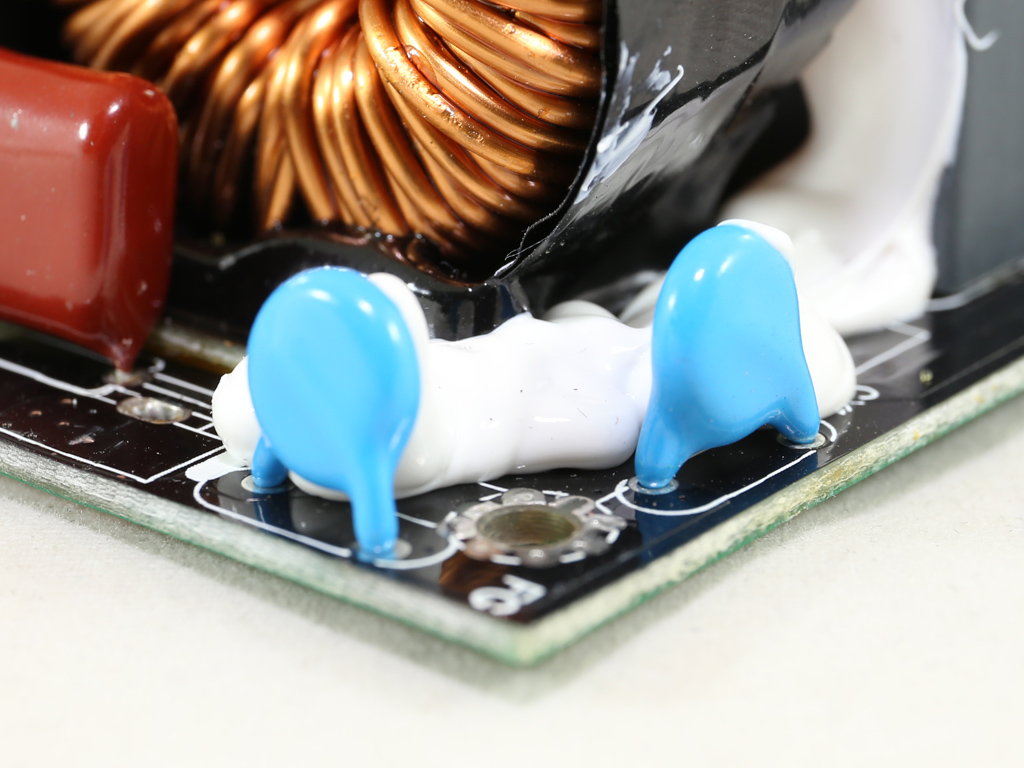
The first part of the transient filter starts at the AC receptacle with two Y caps. The rest is on the main PCB, and includes two more X caps, two Y ones, two CM chokes, and an MOV. In addition, the EMI filtering stage on the main PCB is protected by a copper shield that lowers EMI noise. This shield should be grounded, however, to offer the best possible protection.
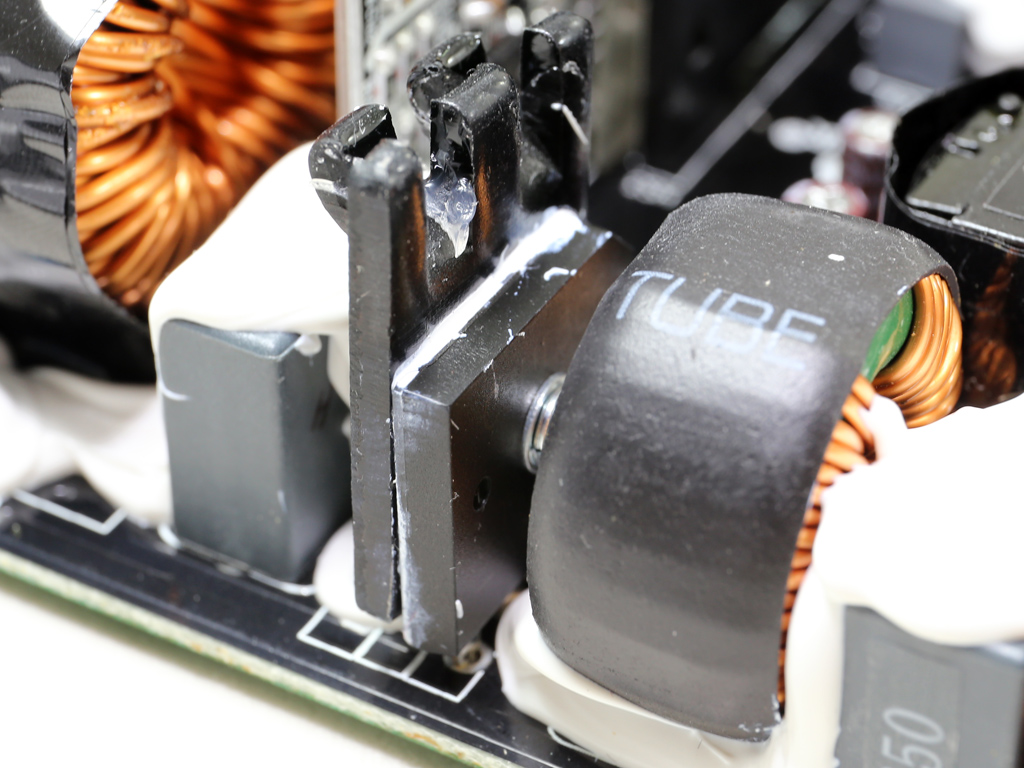
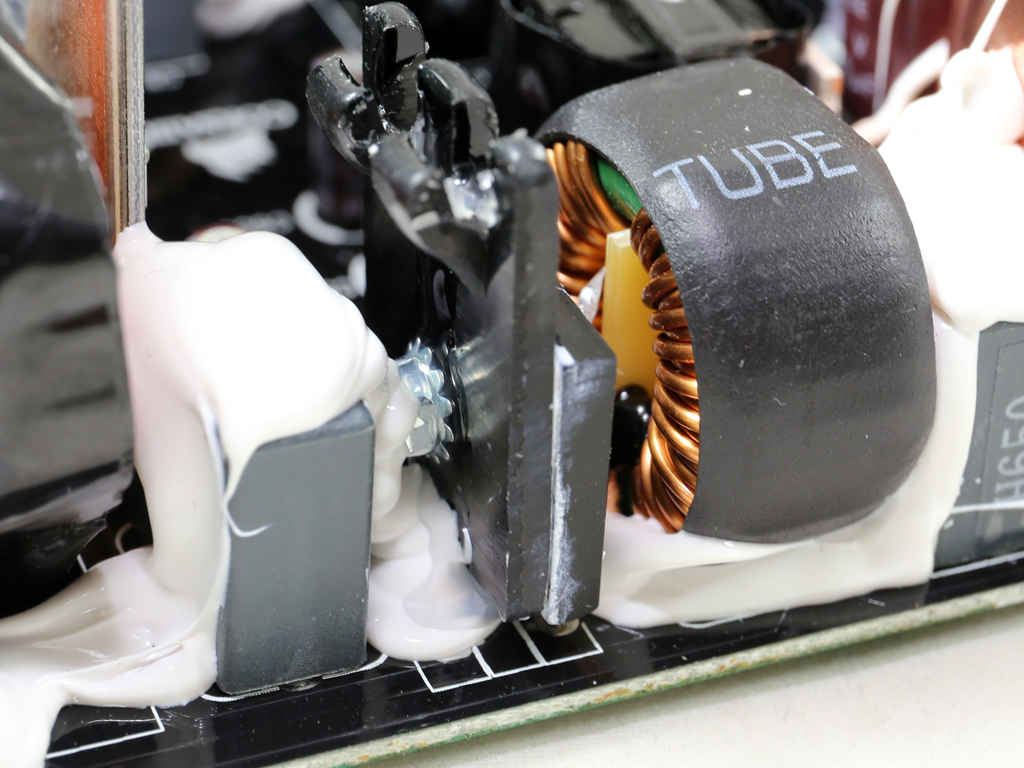
The single bridge rectifier, a GBU1506, is bolted onto a small heat sink. This rectifier is able to handle up to 15 amps of current, easily meeting the RM650x's demands.
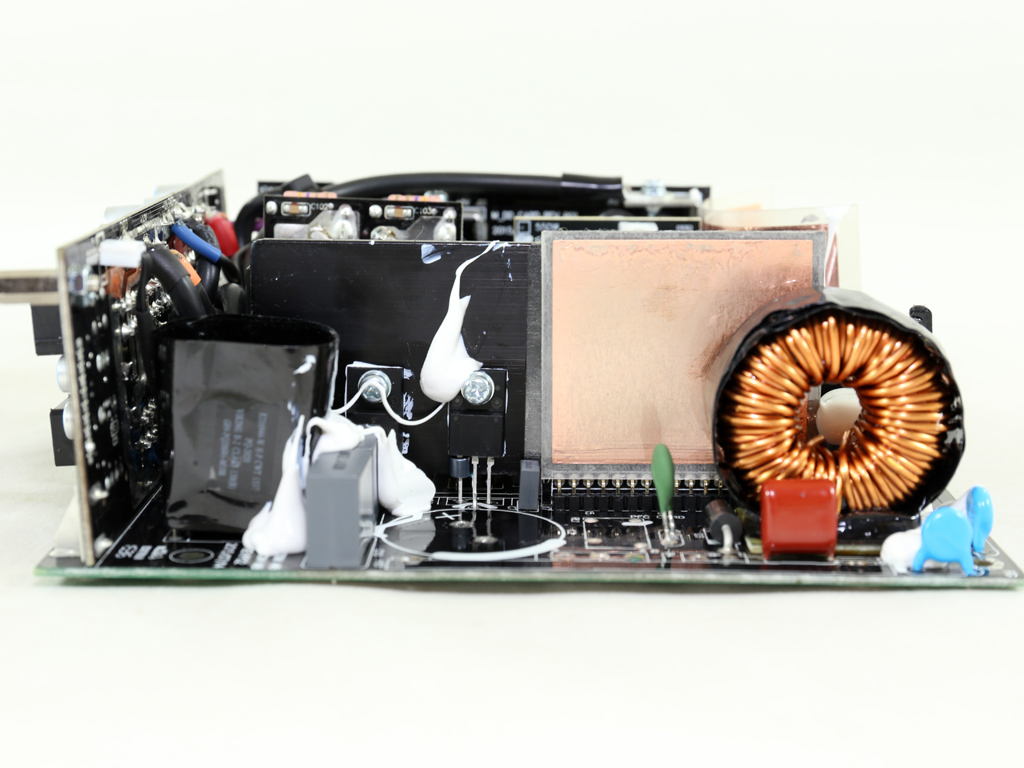
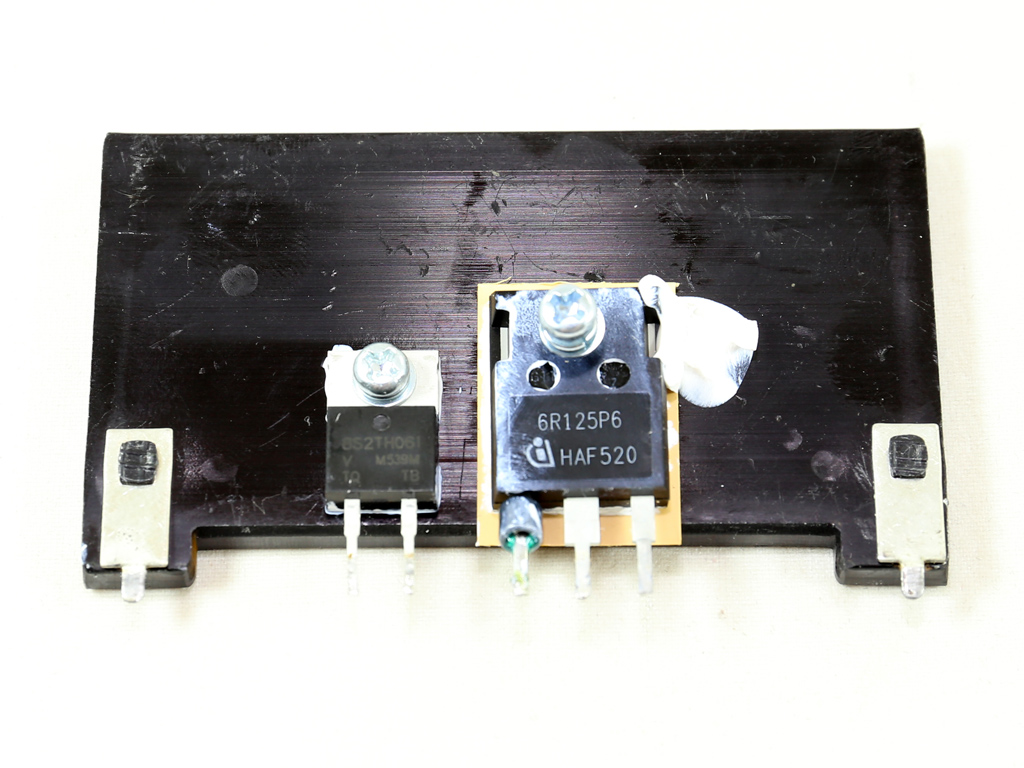
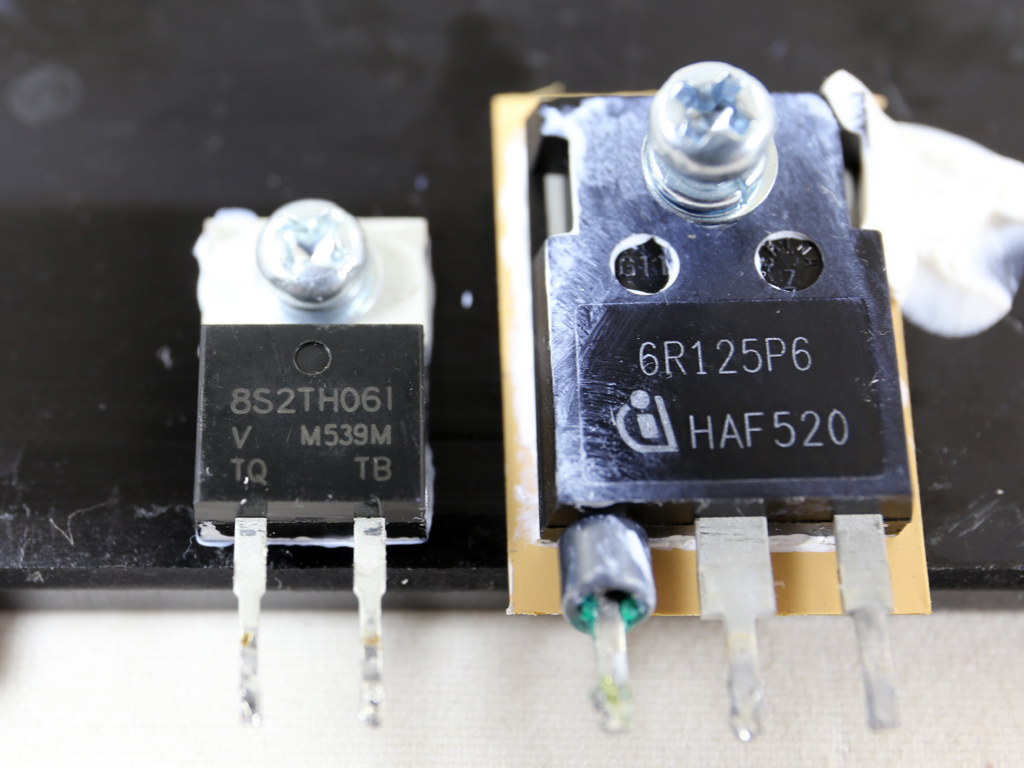
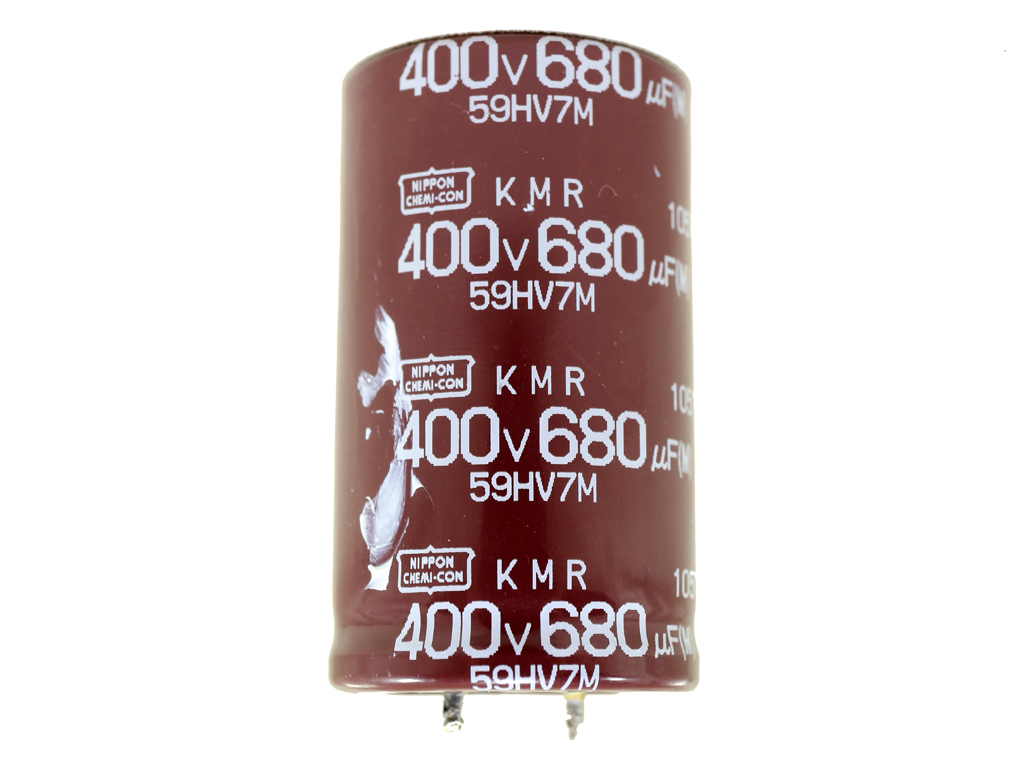
We find a single Infineon IPW60R125P6 FET and a Vishay 8S2TH061 boost diode in the APFC converter. The bulk cap is by Chemi-Con (400V, 680uF, 2000h @ 105 °C, KMR), and its capacity is ample to provide a longer than 17 ms hold-up time.
In front of the PFC coil is a small NTC thermistor that provides protection against large inrush currents. Unfortunately, no bypass relay is used. That's a shame since, besides a small efficiency boost it would also increase the inrush current protection level.
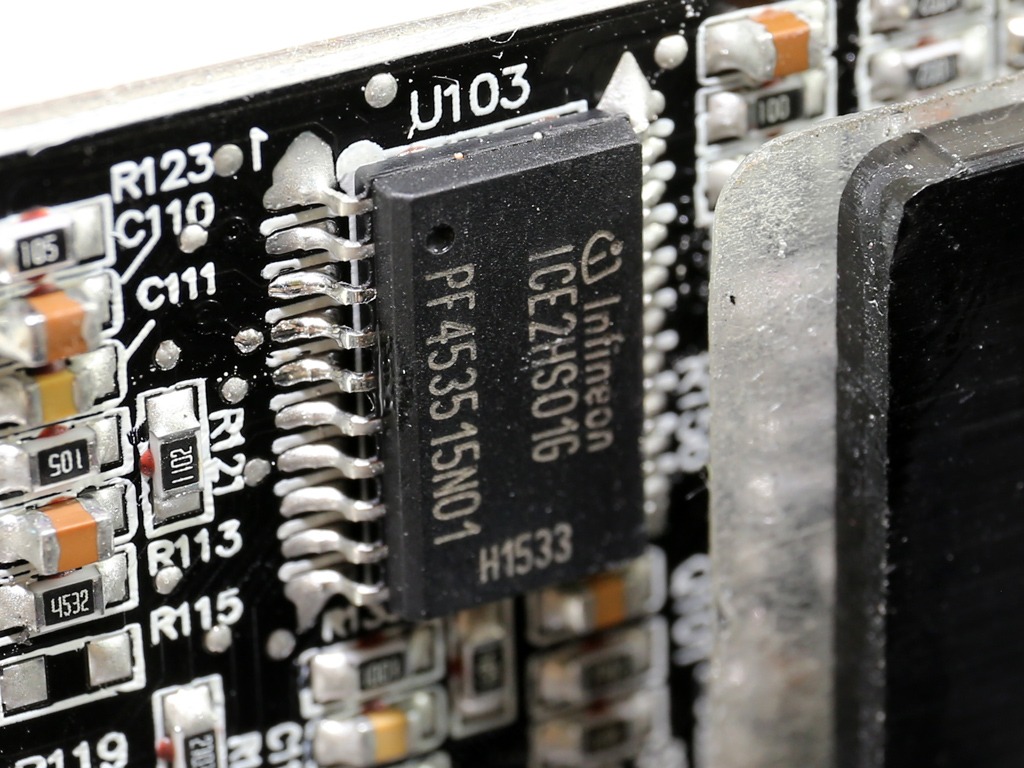
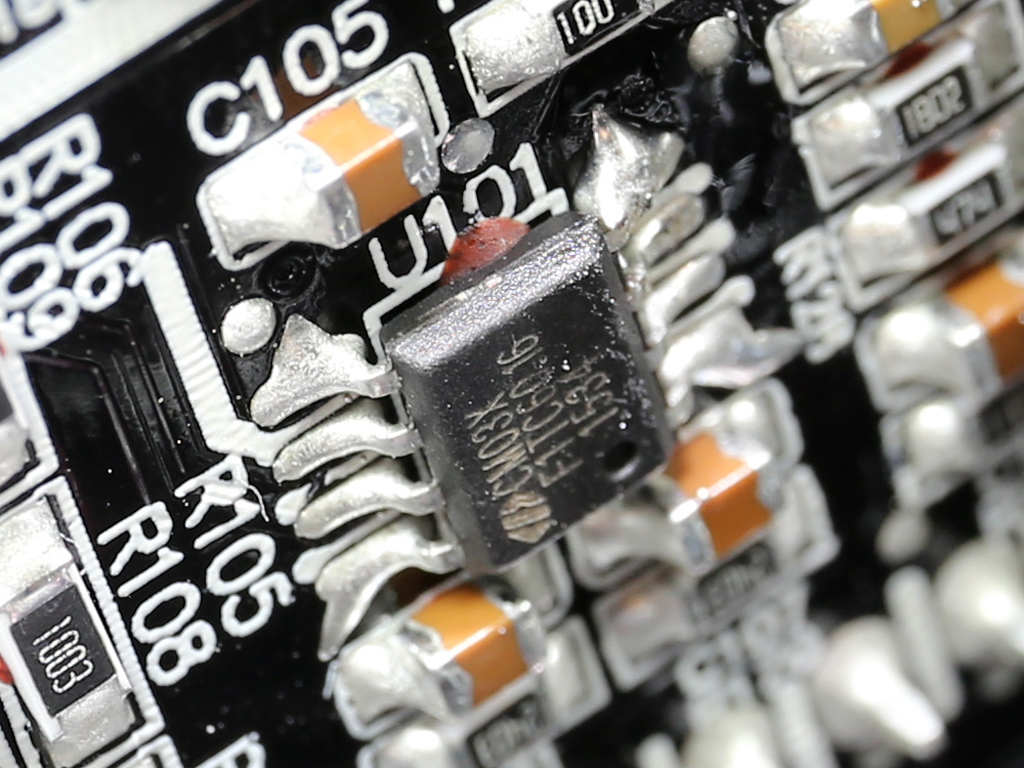
This small daughterboard hosts the APFC controller, an Infineon ICE3PCS01G, along with an Infineon CM03X Green PFC controller. On the same board, there's also an Infineon ICE2HS01G LLC resonant controller.
Get Tom's Hardware's best news and in-depth reviews, straight to your inbox.
The main switching FETs are a couple of Toshiba TK18A60Vs arranged into a half-bridge topology.
These are the capacitive and inductive parts of the LLC resonant converter.
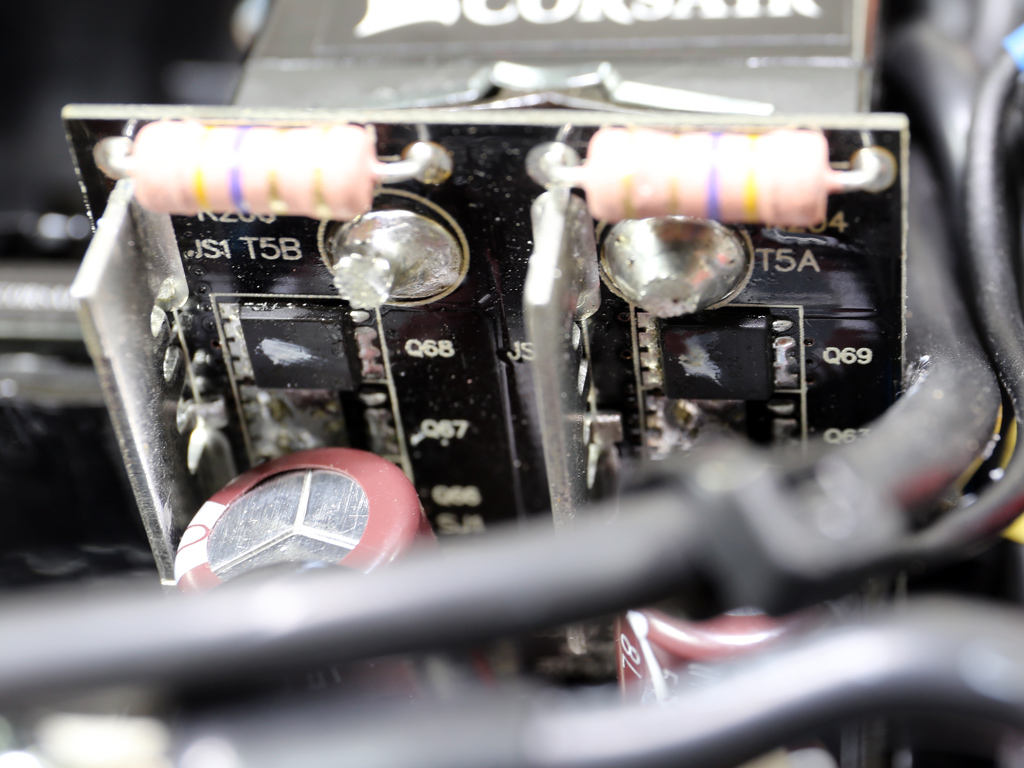
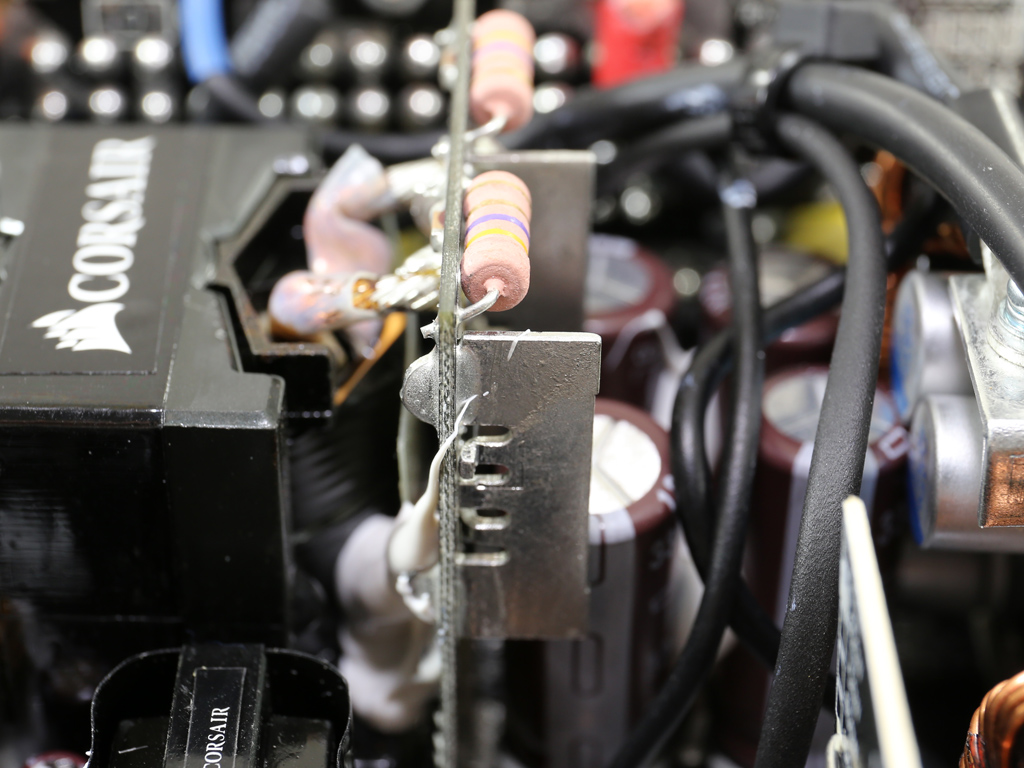
The lack of heat sinks on the secondary side is immediately noticeable to a trained eye. A small vertical board holds the +12V FETs, four Sinopower SM4021NAKPs, which are cooled by the PCB and two metallic bars. Two cables connect the main transformer to the +12V board. By making them short and thick, power losses are minimized.
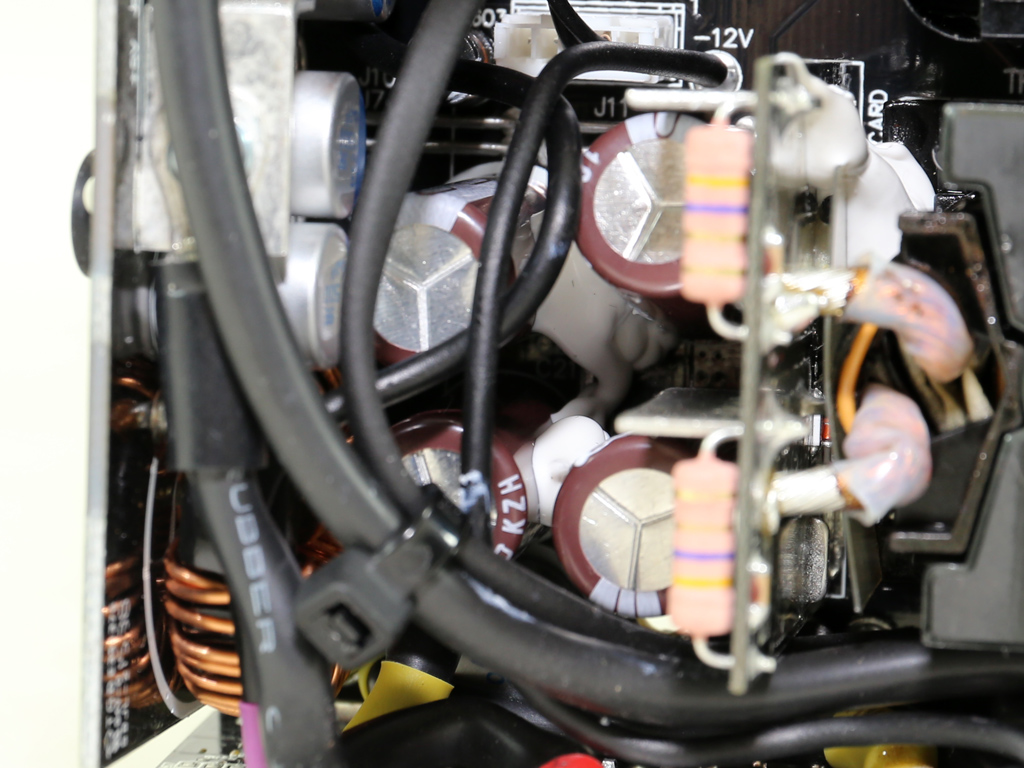
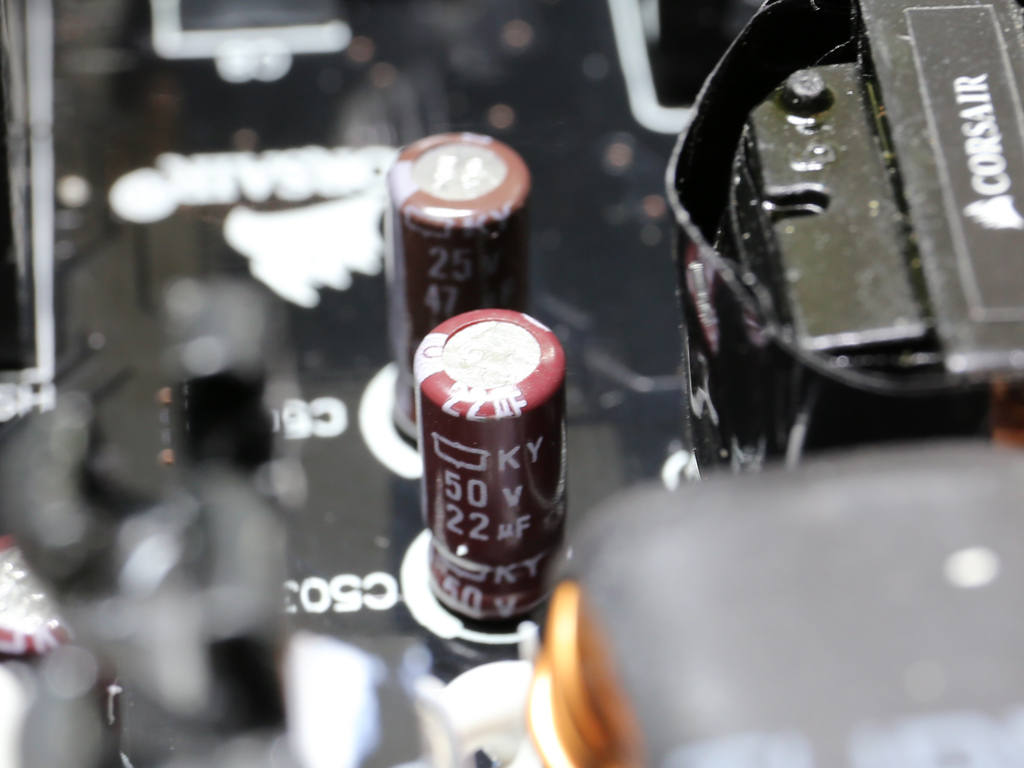
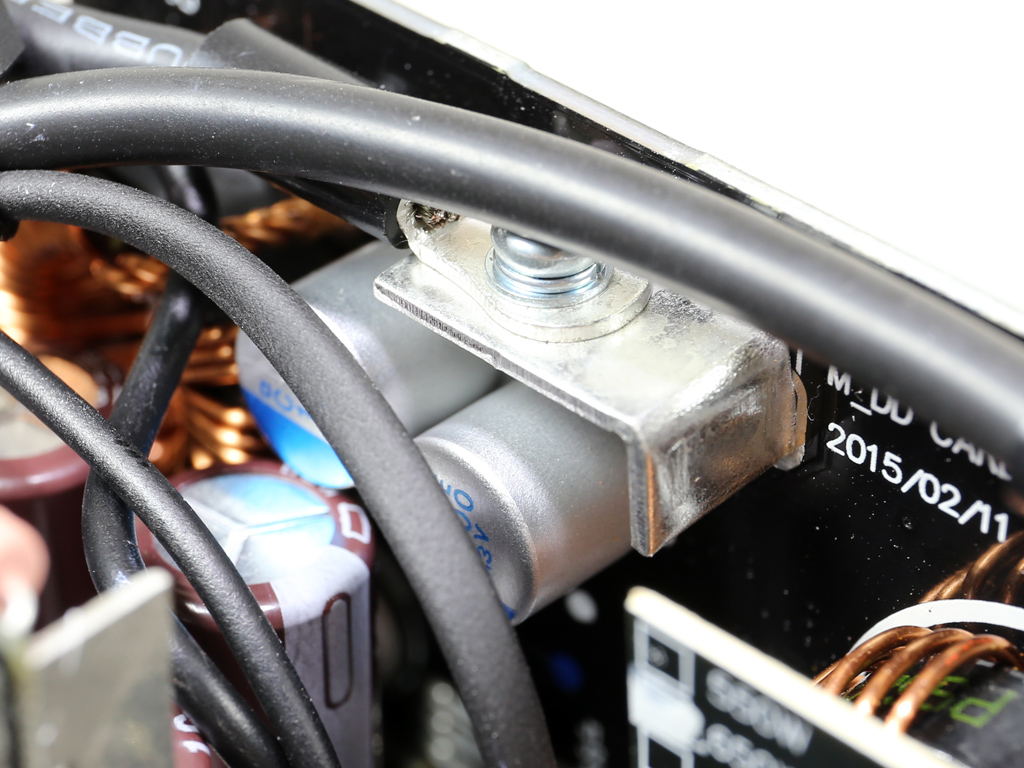

Four electrolytic caps (provided by Chemi-Con) filter the +12V rail. They're rated at 105 °C. The rest of the electrolytic and polymer filtering caps come from Chemi-Con, too.
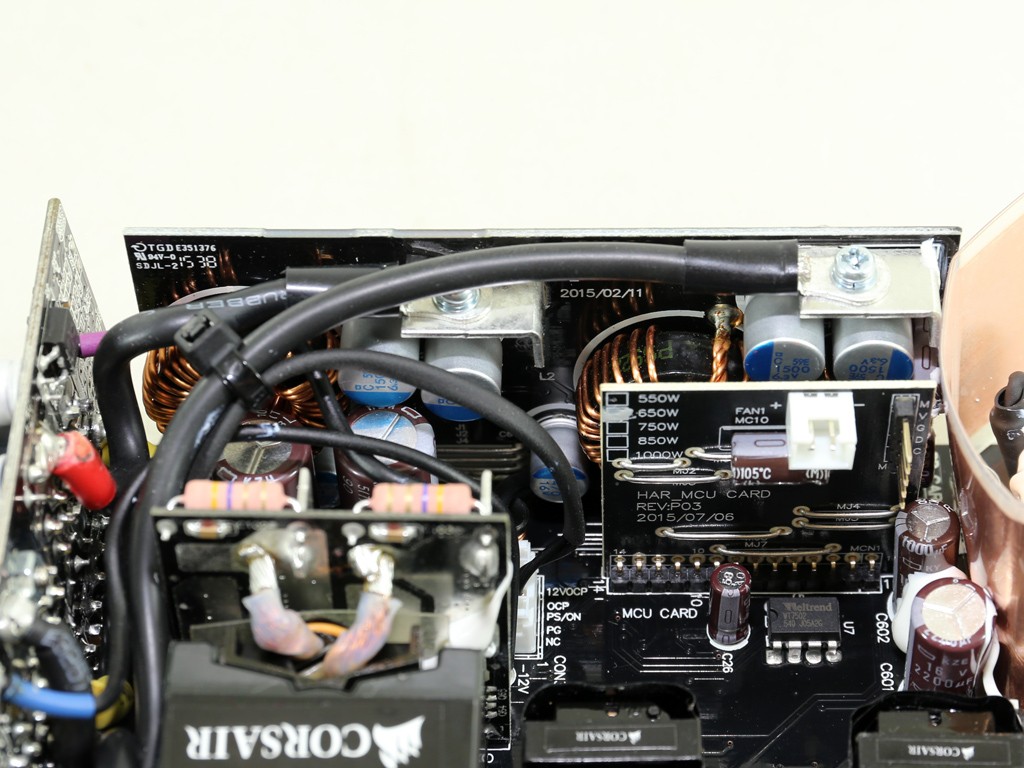
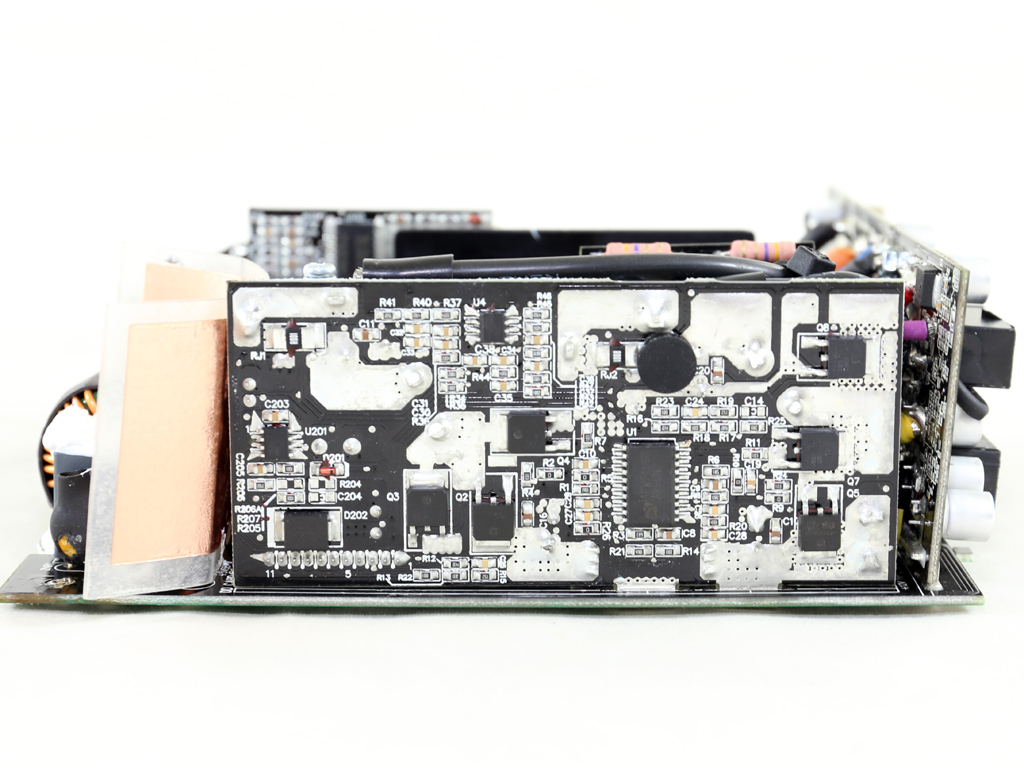
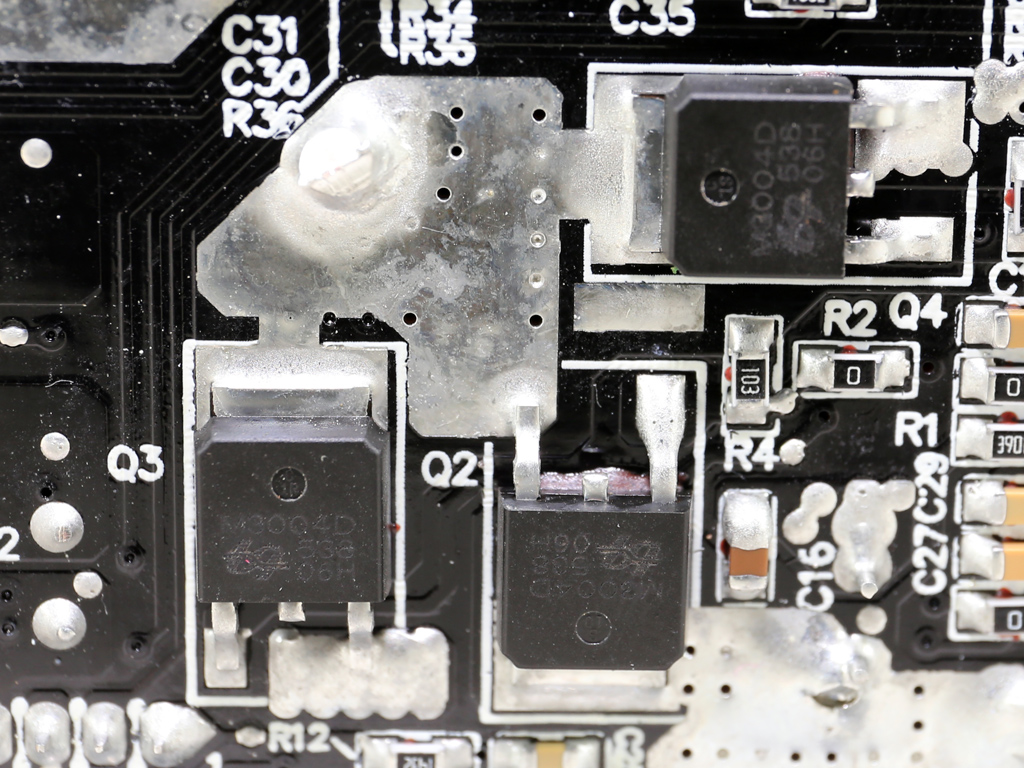
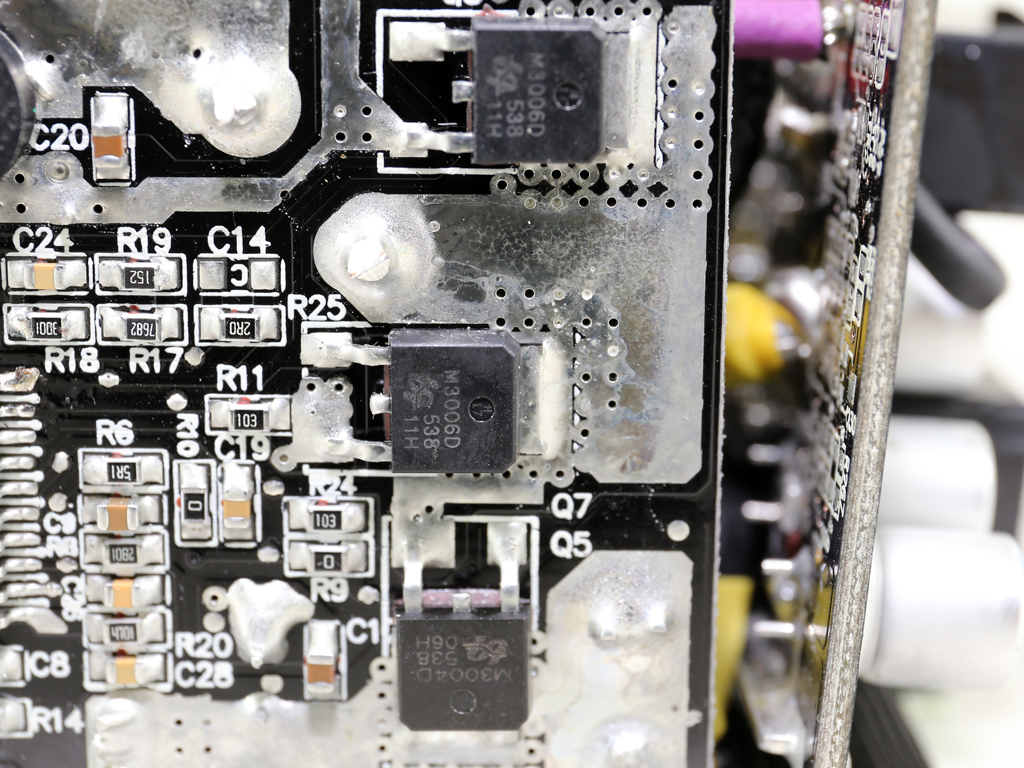
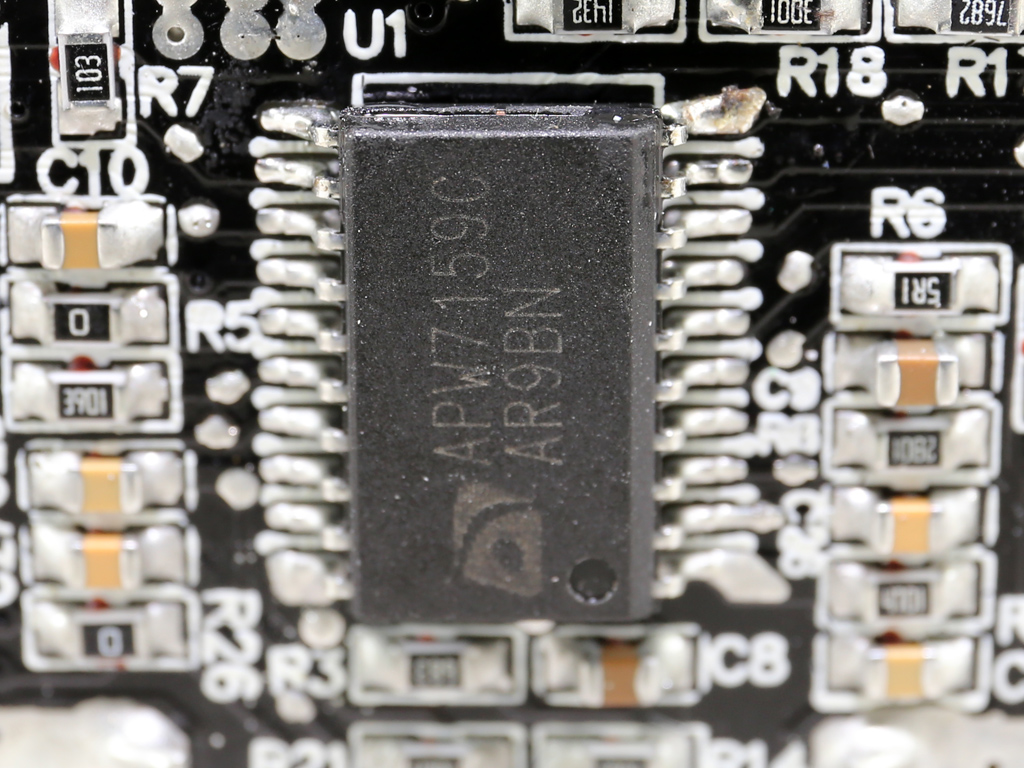
A large PCB hosts the DC-DC converter responsible for the minor rails. The common PWM controller is an ANPEC APW7159, and in total two QM3006D and four QM3004D FETs are used.
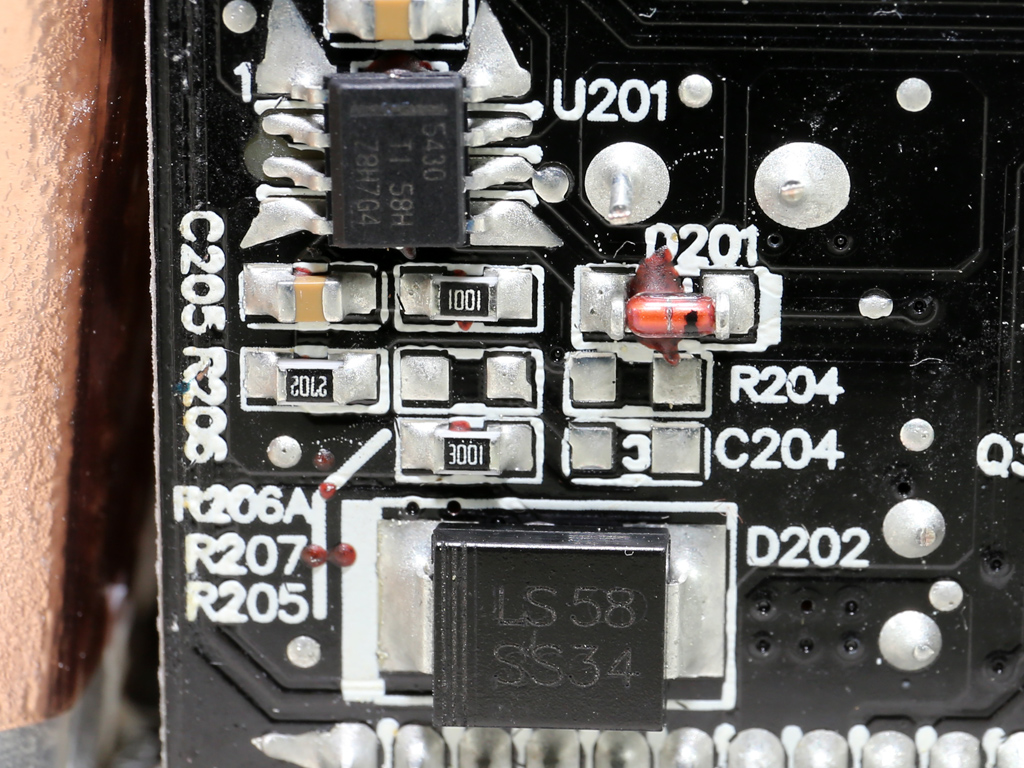
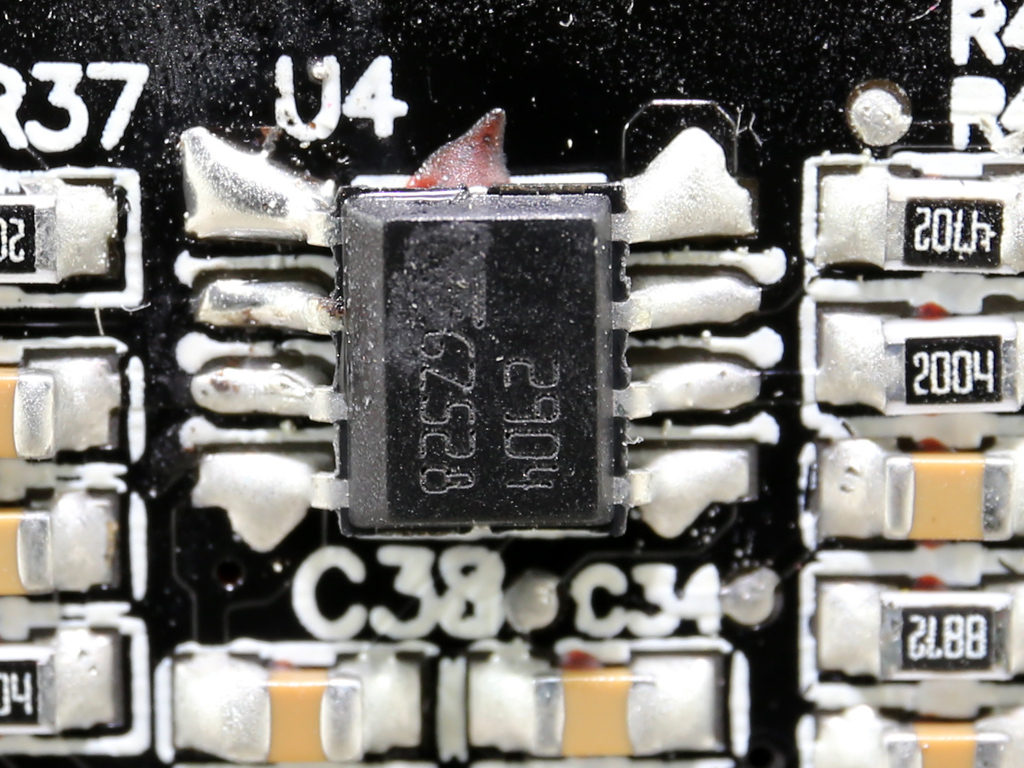
We also find a Texas Instruments TPS5430 step-down converter on the DC-DC board, along with an LM2904 IC that ingrates a couple of op-amps.
Housekeeping is handled by a Weltrend WT7502 IC installed on the main PCB. This specific circuit provides only basic protections: OVP, UVP, and SCP for the minor rails. CWT uses other ICs to implement the other protection features.
A PFR20V45CT Schottky Barrier Diode (SBR) installed on the PCB's component side regulates the 5VSB rail. The standby PWM controller is an On-Bright OB5269 IC, which is installed on the solder side of the main PCB. Right next to it is a M03N65D FET that's most likely used by the 5VSB rail as well.
The fan controller board features a two-pin header; the same board is used by all RMx models.
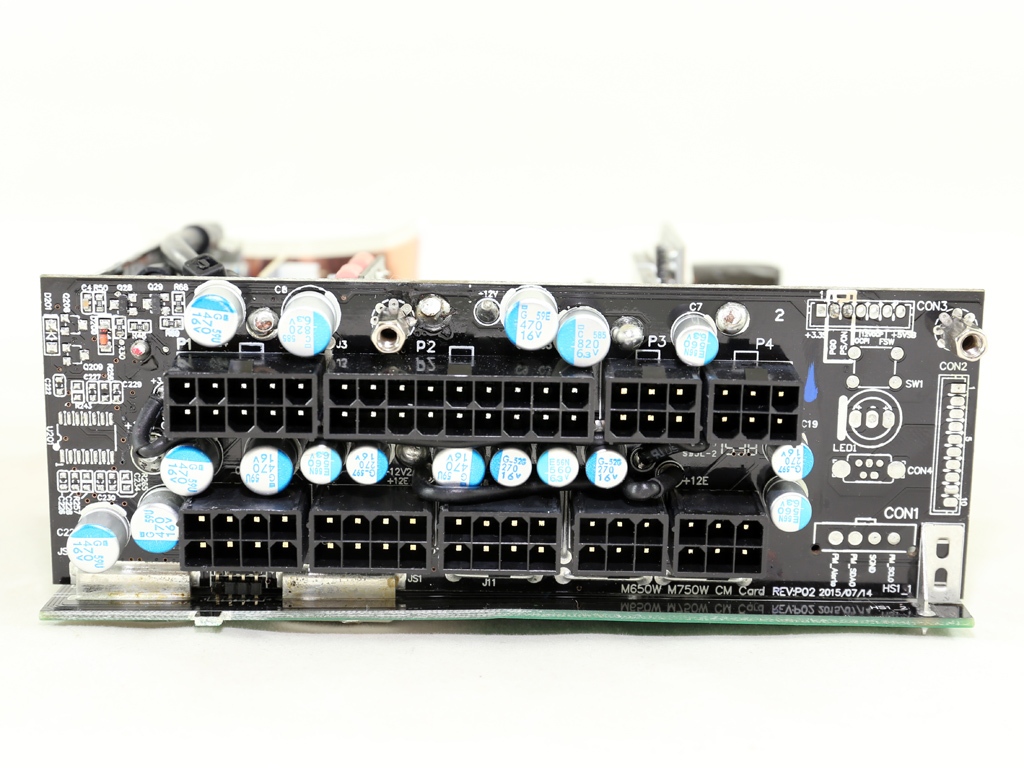
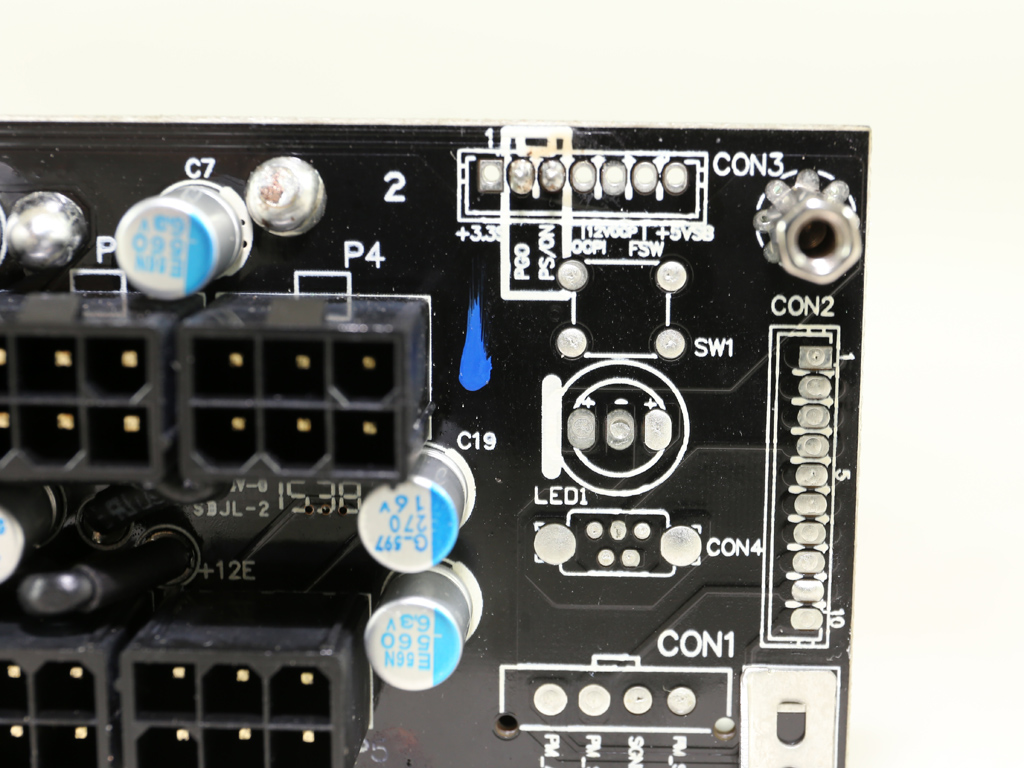
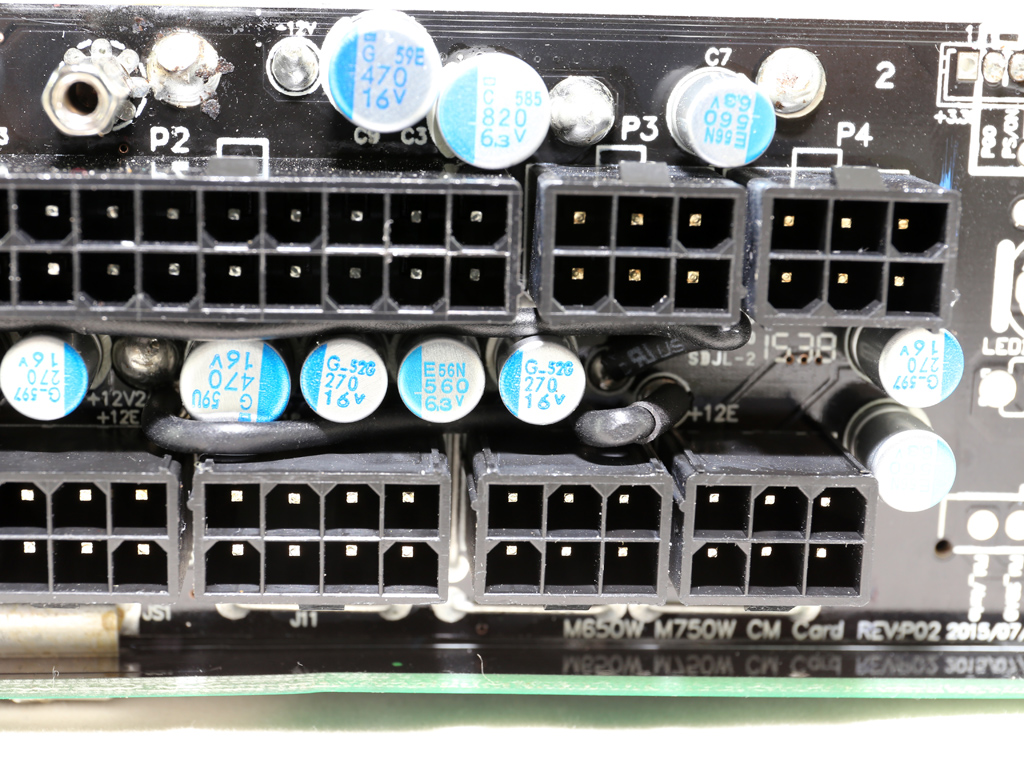
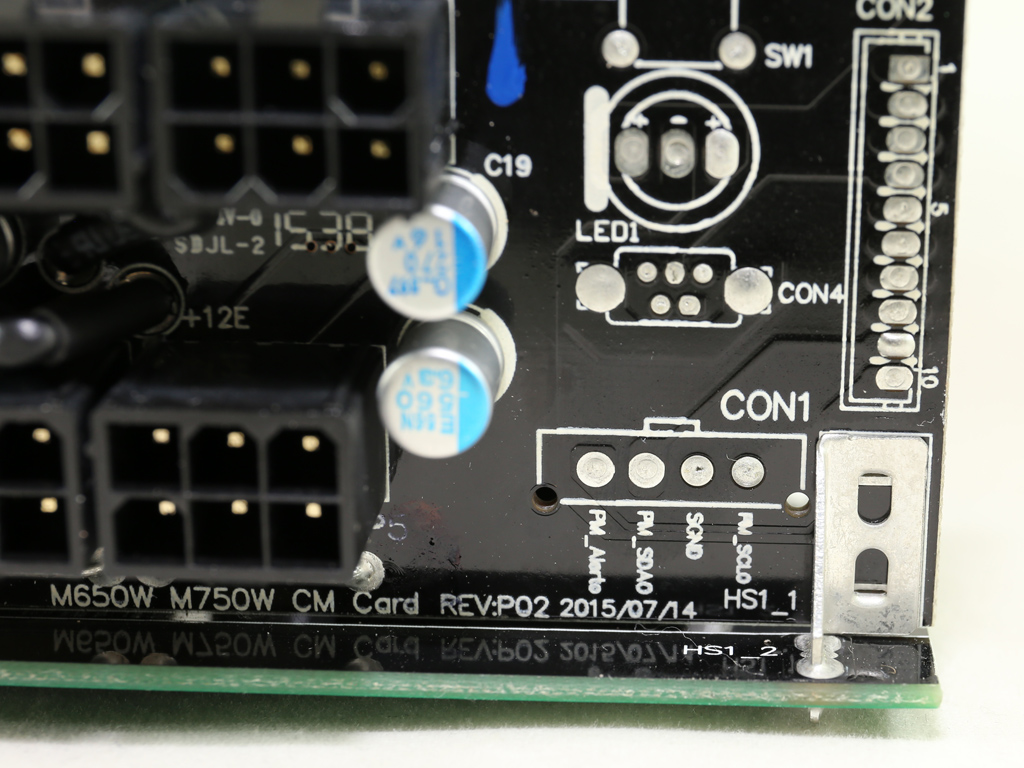
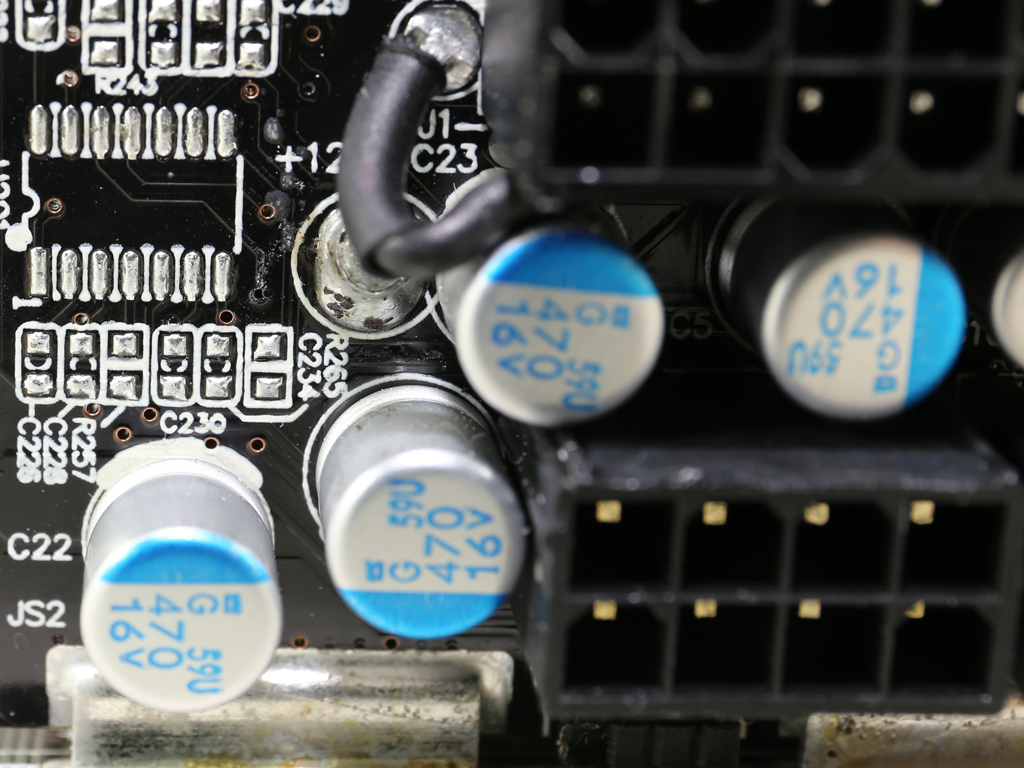
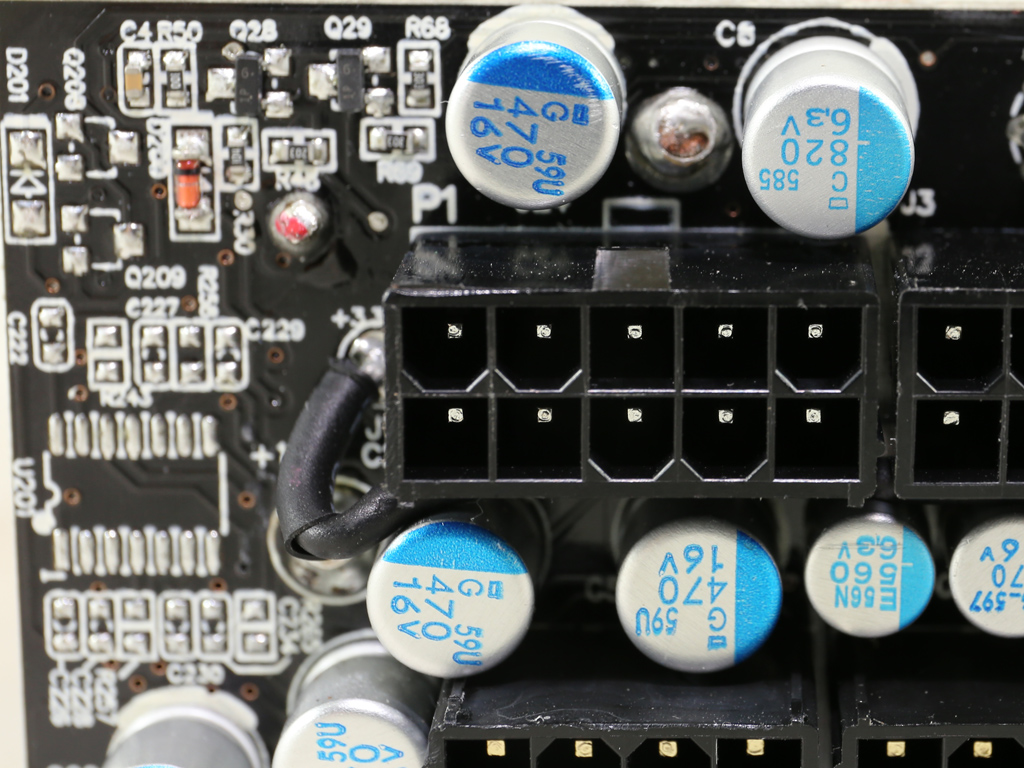
A number of polymer filtering caps are installed on the front of the modular PCB. These capacitors further suppress ripple, and because of their low ESR, they don't affect efficiency in a notable way.
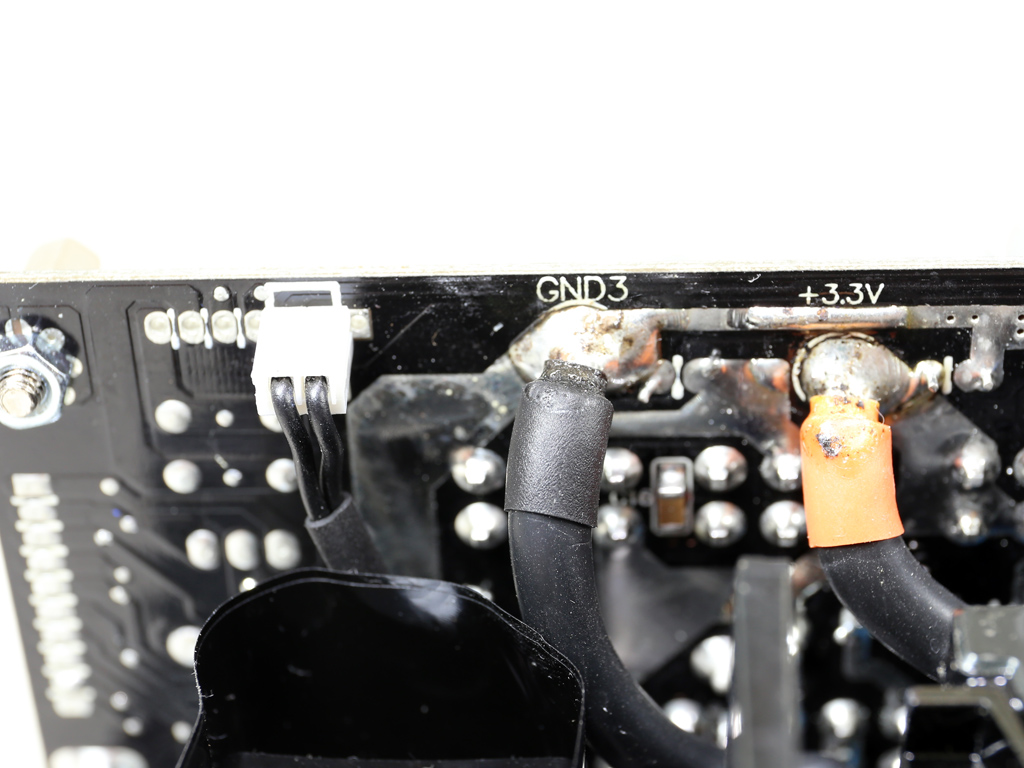
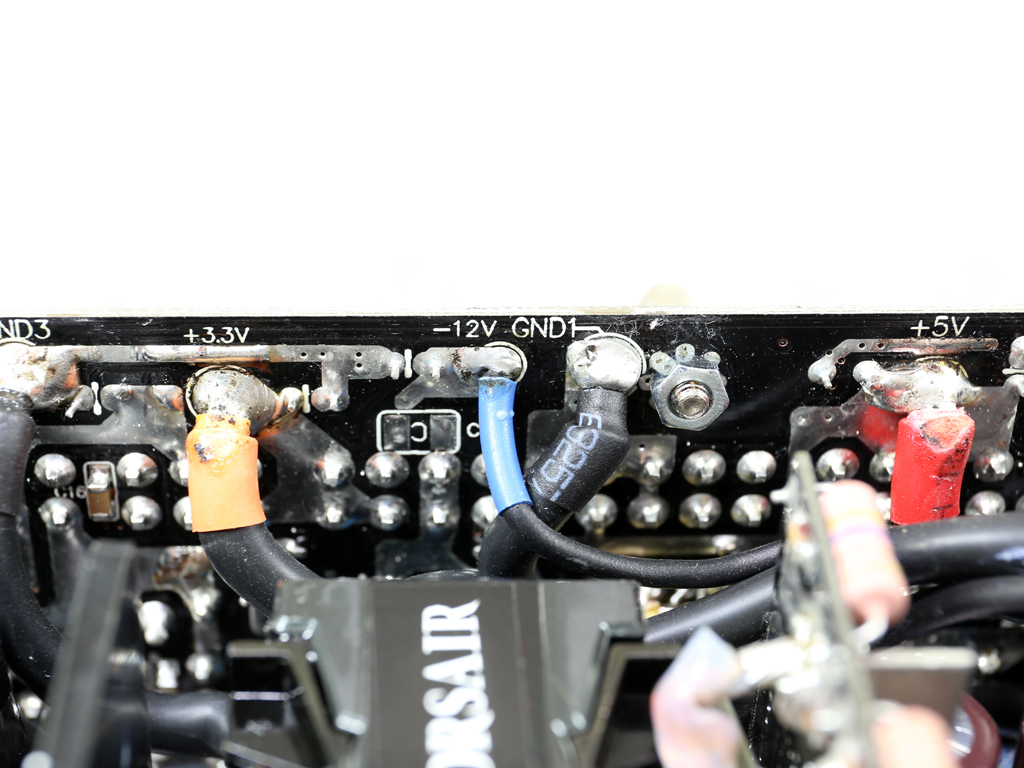
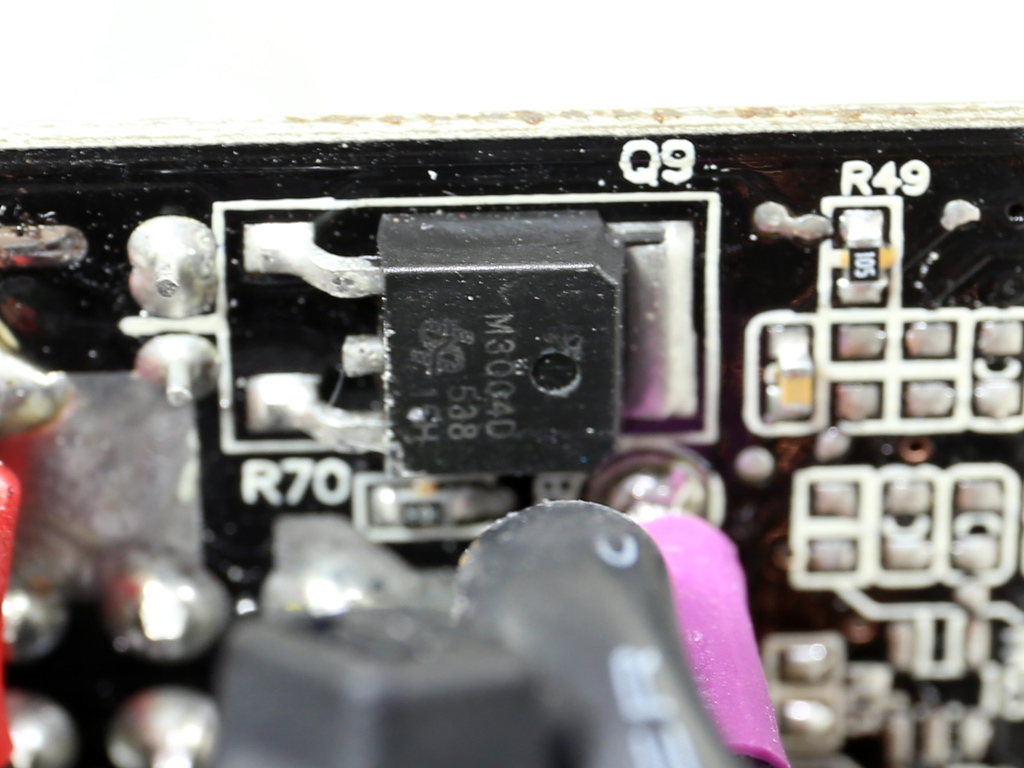
On the back of the modular board, several thick cables (with clear signs of abuse due to high temperatures during the soldering process) are used for power transfer purposes. We also find a single QM3004D FET on the same side.
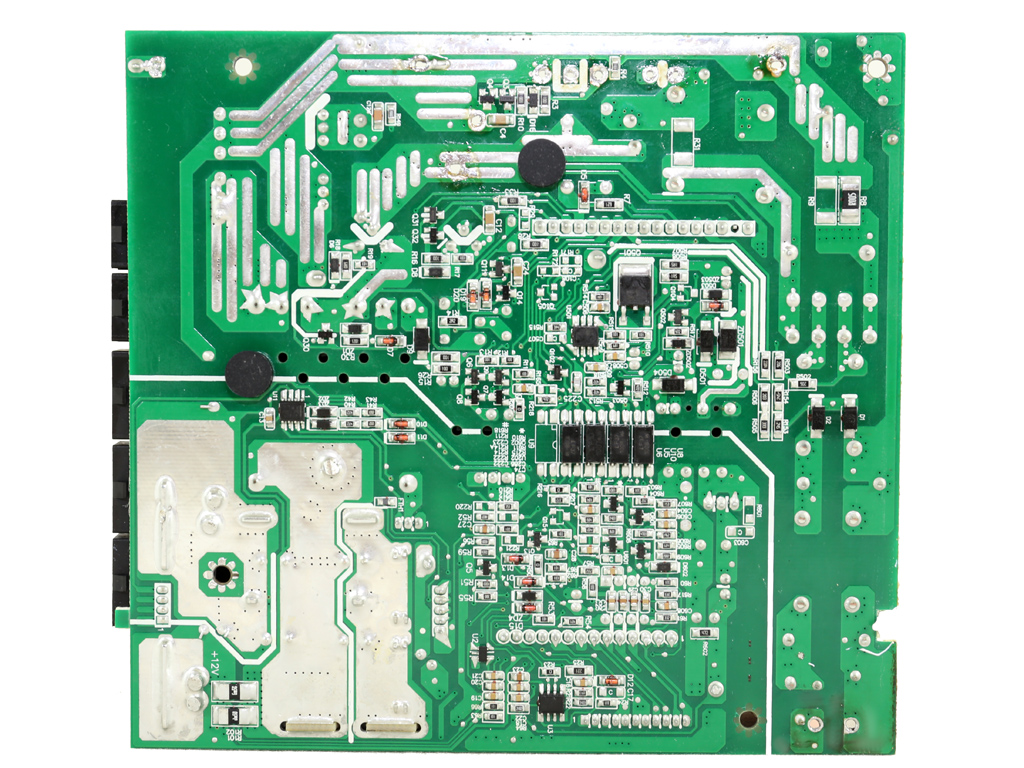
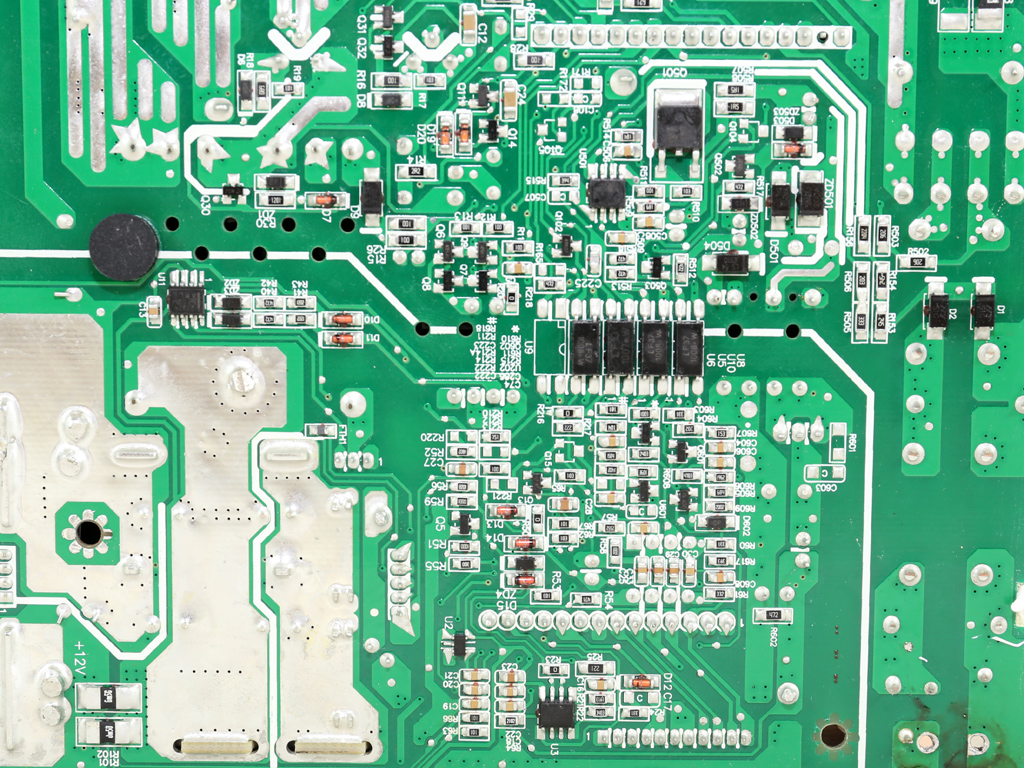
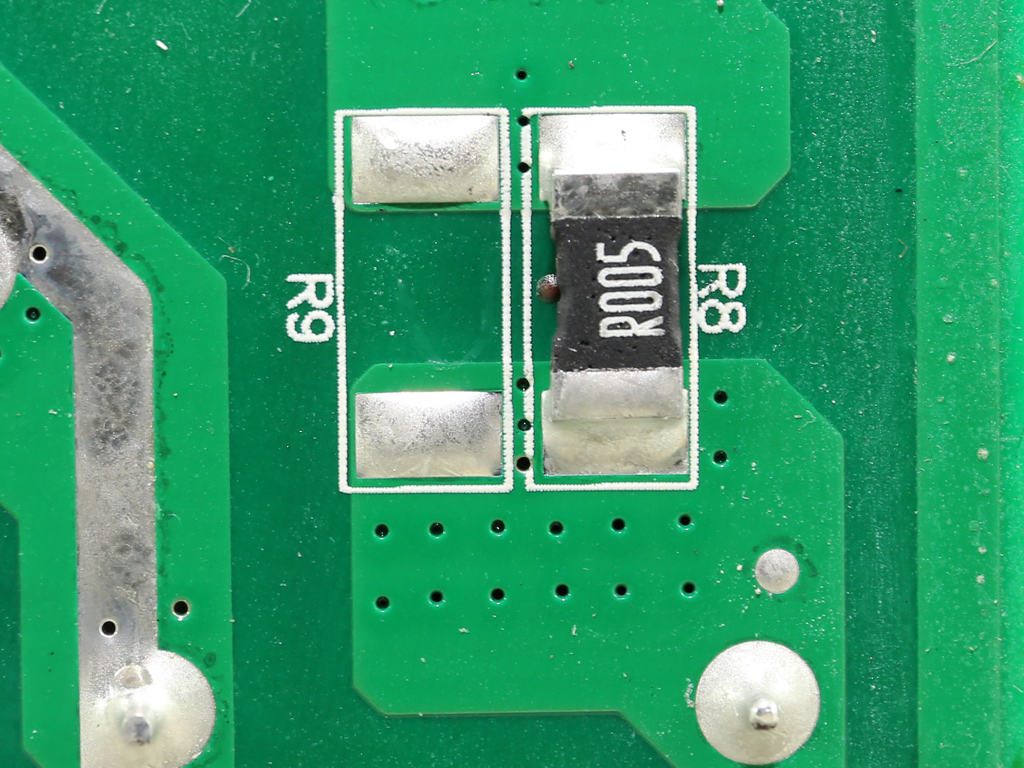
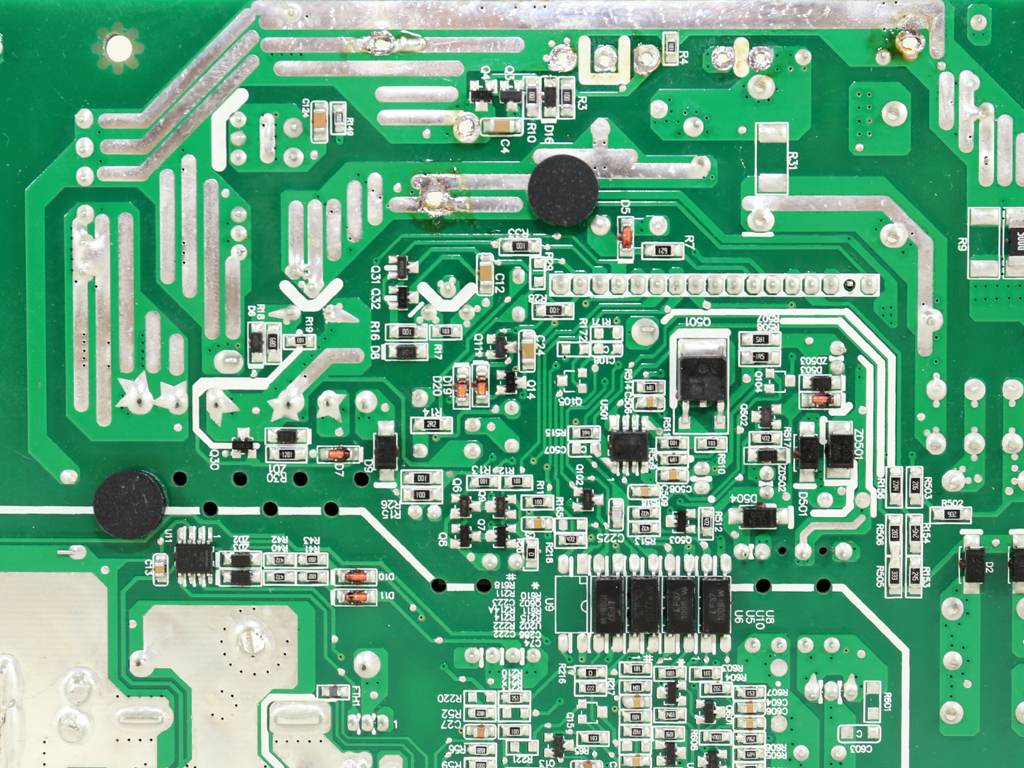
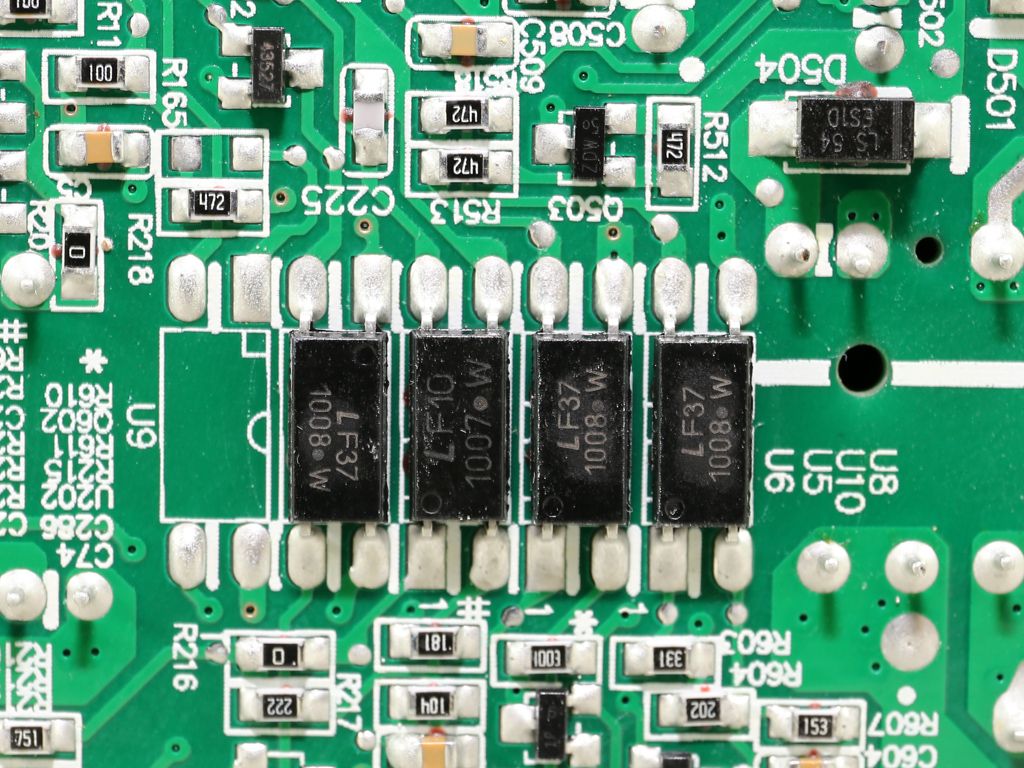

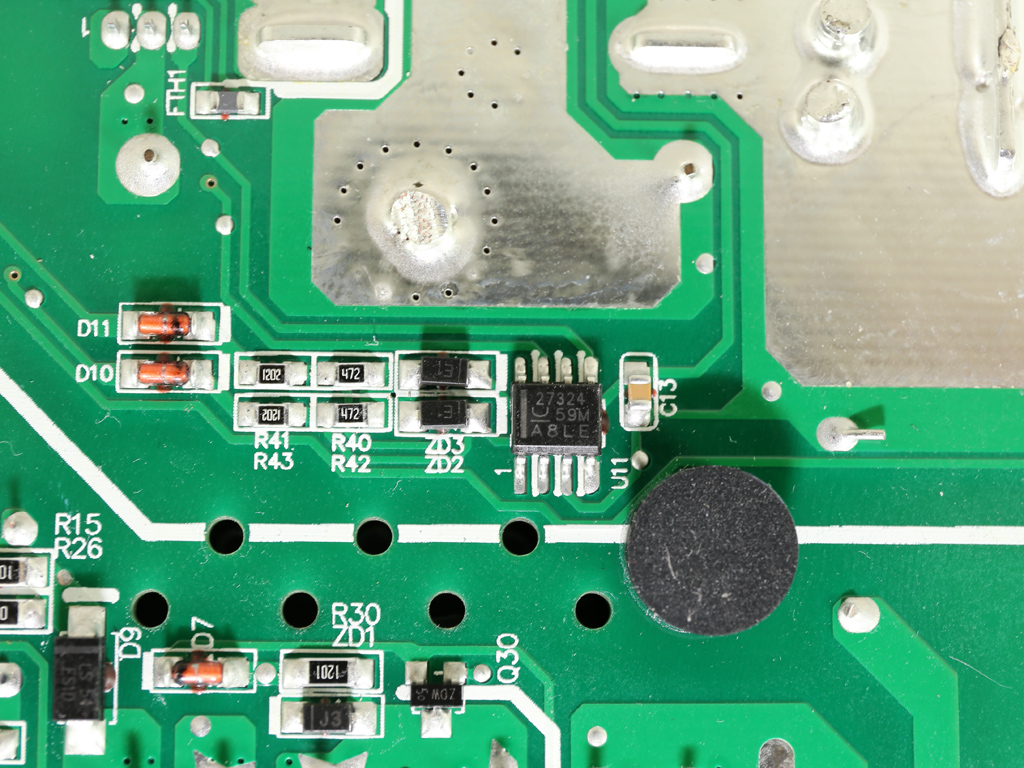
The soldering quality is very good, as is usually the case in CWT's implementations.
A couple of shunt resistors are installed under the +12V islands, suggesting this platform can support OCP for at least two +12V rails when the proper supervisor IC is used. There is also space on the modular PCB for two extra supervisor ICs, which you find in the RMi-based models.
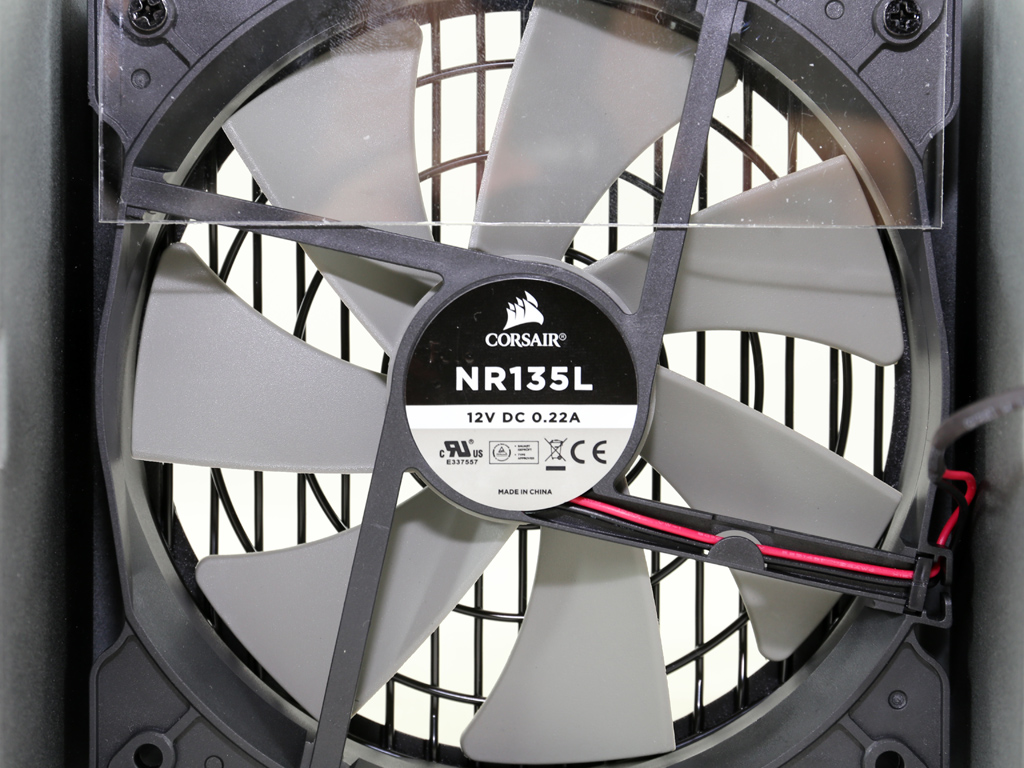
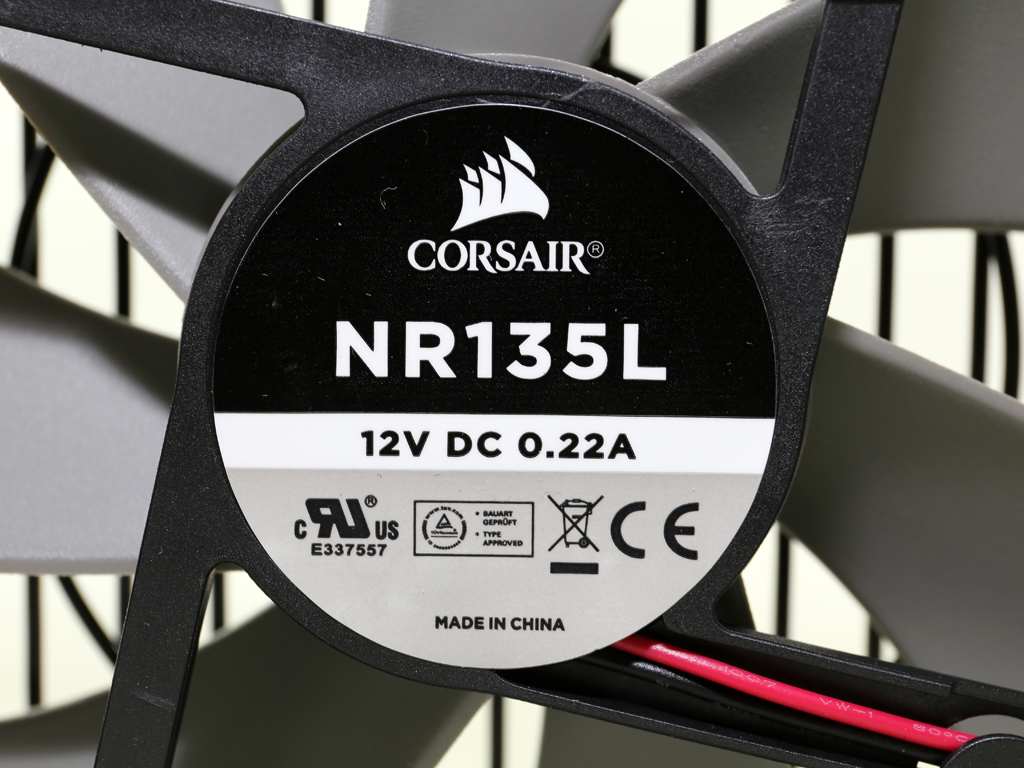
The same fan is used on all Corsair RMx PSUs, from 550W to 1kW. The NR135L (135mm, 12V, 0.22A) is a low-speed rifle bearing fan featuring quiet operation, even when it rotates as fast as it can.
Current page: A Look Inside And Component Analysis
Prev Page Packaging, Contents, Exterior, And Cabling Next Page Load Regulation, Hold-Up Time And Inrush Current And Protections
Aris Mpitziopoulos is a contributing editor at Tom's Hardware, covering PSUs.
-
maxwellmelon for all the good listed in this article, this series of psu just gets bashed in the fourms, just interesting.Reply -
basroil Reply18305746 said:for all the good listed in this article, this series of psu just gets bashed in the fourms, just interesting.
You're thinking of the older RM650, different design.
The review here just made this unit be one of my recommended 650 models, tied with the EVGA G2/P2 and just below the Seasonic 660XP2! -
pjc6281 I have had this PSU for my new Skylake build for 2 months. Its GREAT, quiet and even have it pushing my old dinosaur Nvidia 590 with no problems. My old power supply was a Corsair AX1200 that was rock solid as well. Nothing but good experiences with them. I know others differ.Reply -
Dark Lord of Tech ReplyRMX doesn't get bashed , RMX and RMI are very very good. I own the RMX 850 , GREAT UNIT. -
TechyInAZ I'm glad the new RM series is much higher quality. All I remember Corsair having is a bunch of bad PSUs with select few good PSU (like AX and HX).Reply
I hope this same kind of quality intros into other models like the newly refreshed CX PSUs. -
Reply18305746 said:for all the good listed in this article, this series of psu just gets bashed in the fourms, just interesting.
Yeah, I believe you are confusing the RMx and RMi with the older, mostly discontinued RM line. And of the old RM line only the 750w and 850w versions that were first made by Chicony Power Technology had the bad reputation. Anyone bashing the RMx and RMi doesn't know what they are talking about. Once misinformation gets out there it's hard to get it corrected though.
Another great review Aris! :) -
Reply18308072 said:Why buy Corsair or EVGA when you can get a Seasonic?
Seasonic doesn't have a lock on quality. They also don't offer a 10 year warranty which both Corsair and EVGA do on some models. Just off the top of my head Flextronics, CWT and SuperFlower are all capable of making units that are at least equal to high end Seasonic quality. There are others as well. -
TechyInAZ Reply18308188 said:18308072 said:Why buy Corsair or EVGA when you can get a Seasonic?
Seasonic doesn't have a lock on quality. They also don't offer a 10 year warranty which both Corsair and EVGA do on some models. Just off the top of my head Flextronics, CWT and SuperFlower are all capable of making units that are at least equal to high end Seasonic quality. There are others as well.
Plus, efficiency levels are typically better with EVGA than Seasonic. -
Reply18308342 said:18308188 said:18308072 said:Why buy Corsair or EVGA when you can get a Seasonic?
Seasonic doesn't have a lock on quality. They also don't offer a 10 year warranty which both Corsair and EVGA do on some models. Just off the top of my head Flextronics, CWT and SuperFlower are all capable of making units that are at least equal to high end Seasonic quality. There are others as well.
Plus, efficiency levels are typically better with EVGA than Seasonic.
:??: Not sure what you mean. EVGA has a couple of 80 Plus Titanium models but Seasonic has Titanium models in their new lineup. I'm not sure if those new Seasonic models are available yet though. Other than that I've had an 80 Plus Platinum Seasonic ( 660XP2 ) for a couple of years and their Platinum line has been out since at least 2011.
